Once again in 2023 I made regular visits to Mamit (Mamette) Lake to kayak and photograph wildlife. This lovely lake is just a 10 minute drive from our house and I am usually the only one out on the lake in the early mornings.
All photos © Alan Burger
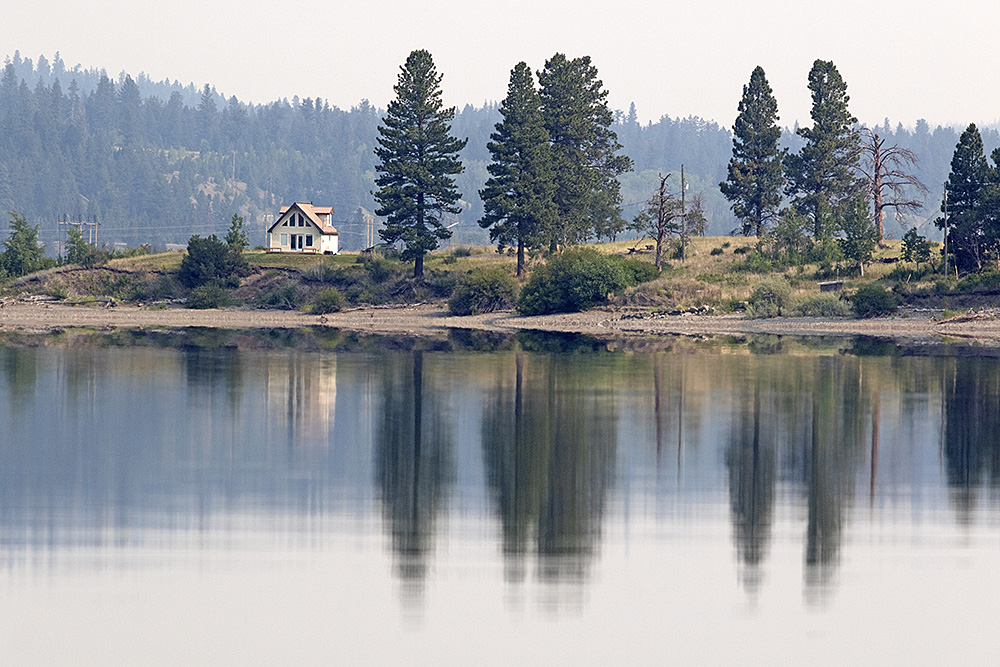
A view of Mamit Lake. Most of the lake shoreline is natural with no houses or fields bordering the lake.
My primary interest at the lake is birding – and every visit is different. Here are a few species from my visits, beginning in late July and continuing until early October.
Only three species of shorebirds breed at the lake in summer, in contrast to the 14 plus species that visit on migration. These breeders are Killdeer, Spotted Sandpiper and Wilson’s Snipe.
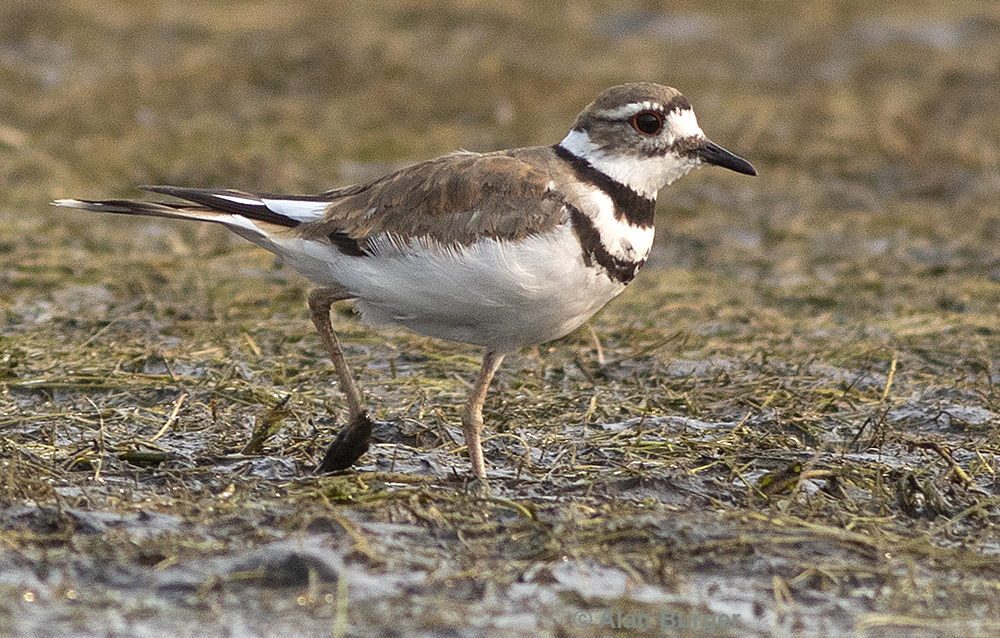
About 8 pairs of Killdeer breed on or near the shores of Mamit Lake. Killdeer feed mainly on the drier parts of the mudflats, taking flies and other insects.
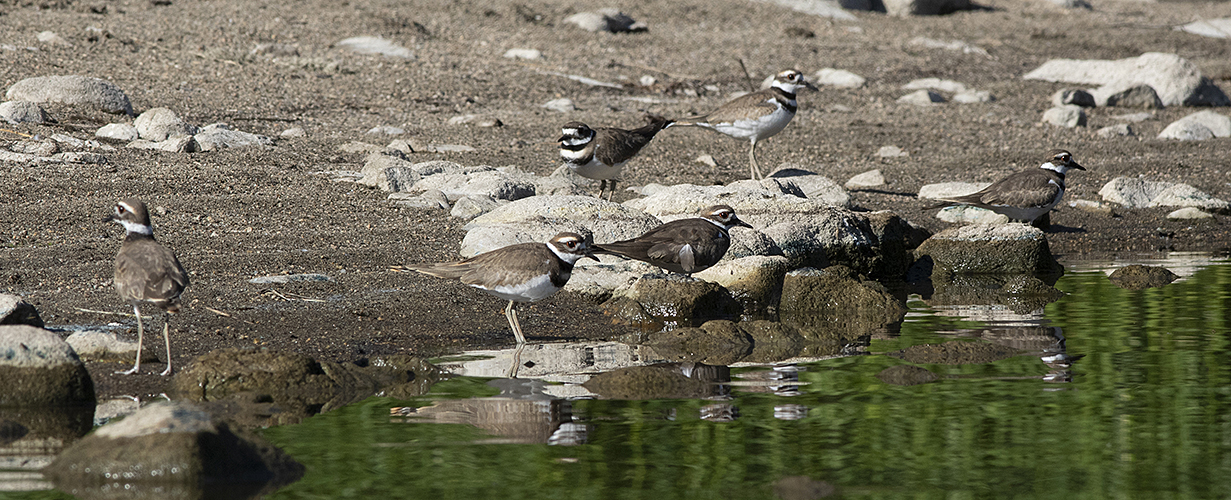
Once the chicks have fledged, Killdeer often hang out in flocks of 10 or more along the shoreline.
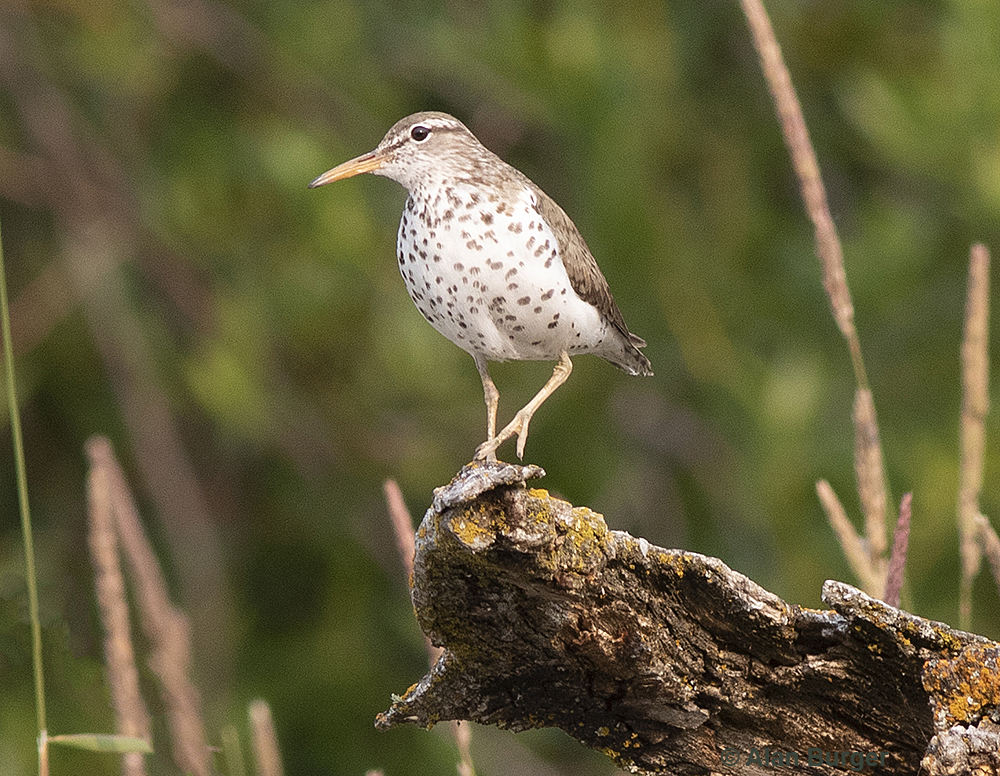
Spotted Sandpipers are the most conspicuous of the shorebirds on the lake. They are resident here all summer and 10 or more pairs establish breeding territories along the shoreline. This adult bird is agitated because it has small chicks hidden nearby.
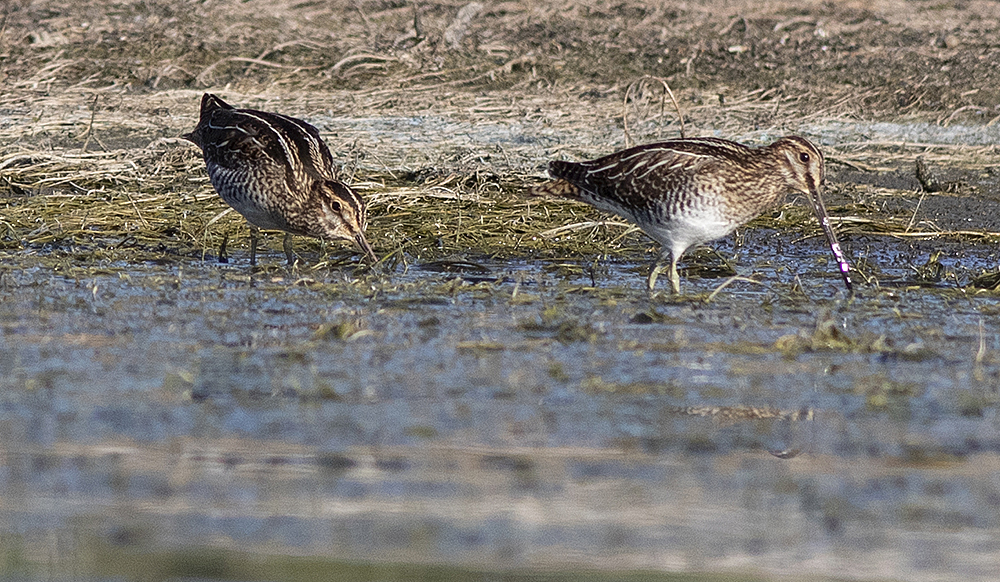
Wilson’s Snipe foraging on the water’s edge. There are probably a dozen or two pairs of snipe nesting around Mamit Lake, but they tend to remain in the thick vegetation and are not often out in the open like this.
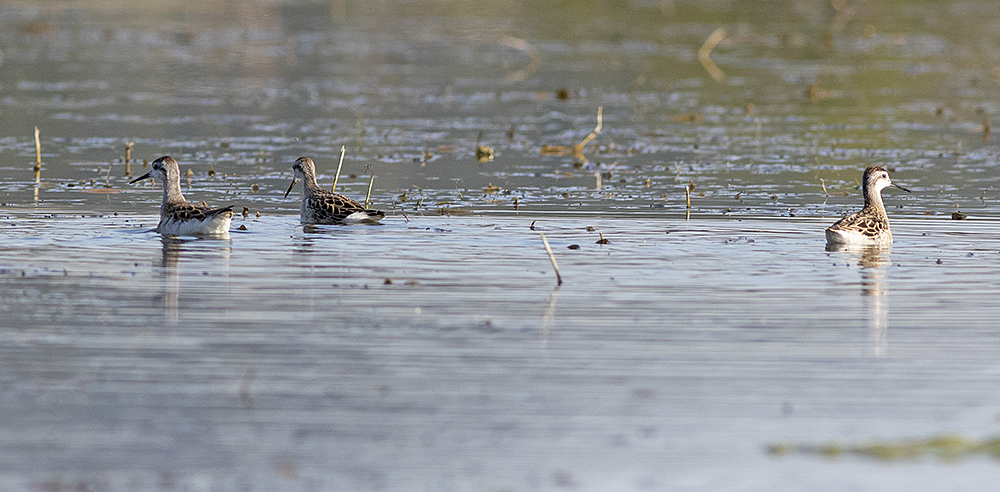
Wilson’s Phalaropes do not breed on Mamit Lake (as far as I have seen), but they must breed on ponds nearby because juvenile birds like these regularly show up in mid- to late-summer. Phalaropes are unusual among shorebirds in that they mainly forage by swimming and picking tiny prey items off the water.
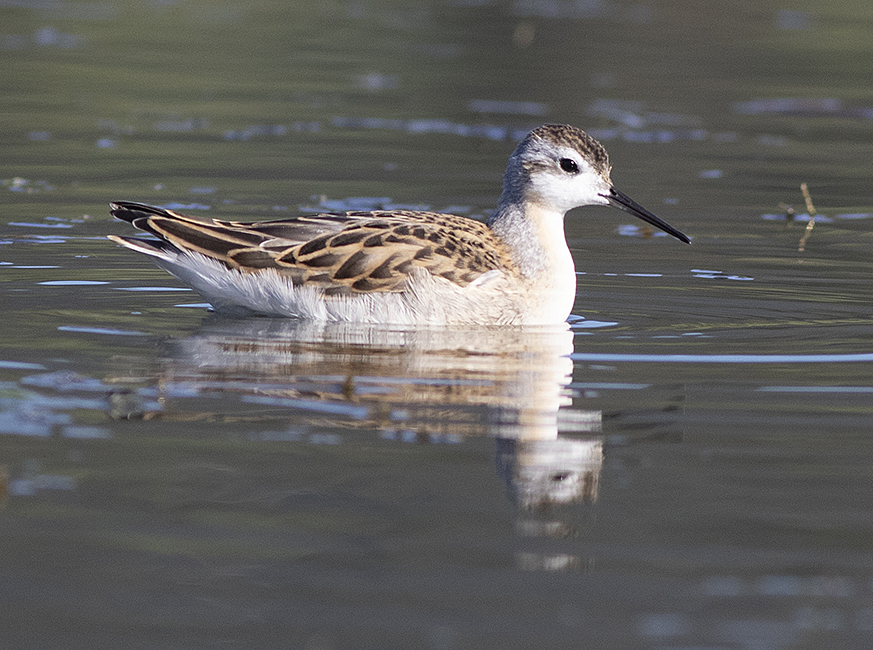
Closer view of a juvenile Wilson’s Phalarope. Notice how immaculate and unworn its feathers are.
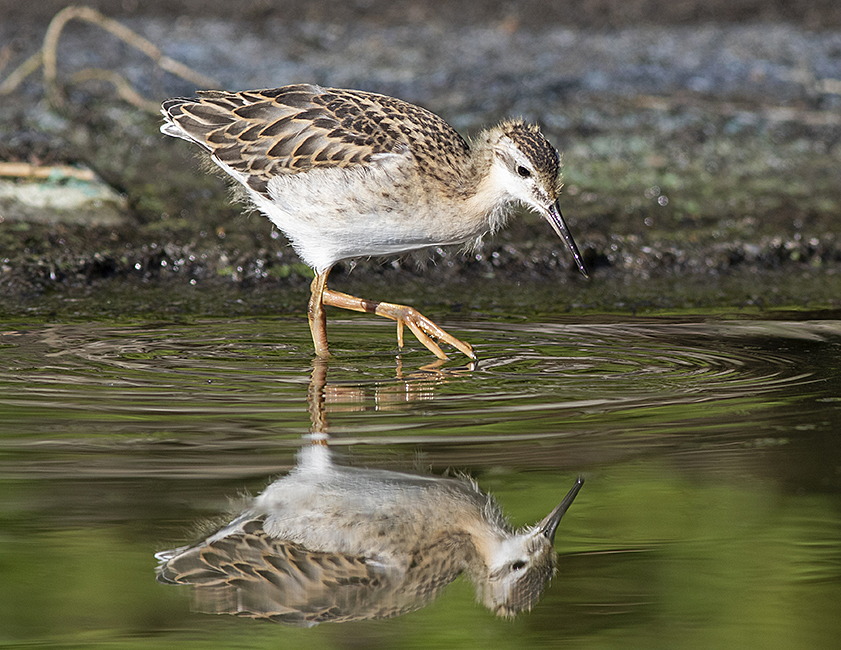
This juvenile Wilson’s Phalarope still carries some of its natal down – suggesting that it must have come from a nearby nesting site.
Several species of waterfowl breed at Mamit Lake and in mid-summer there are numerous broods of ducklings out on the water, usually accompanied by their mother.
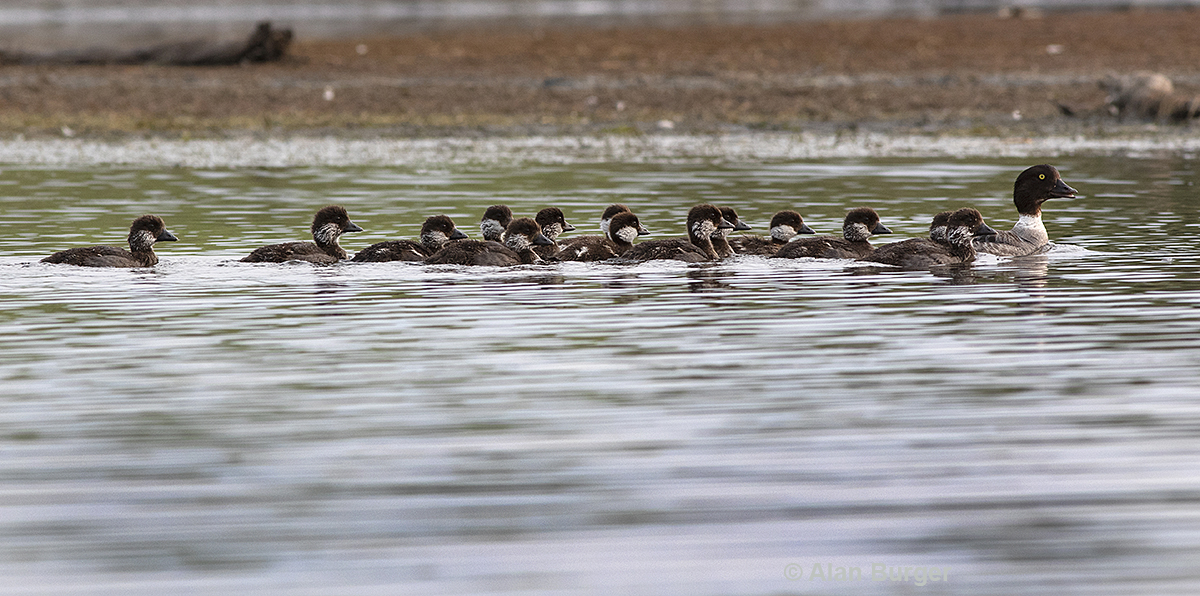
One of several broods of Barrow’s Goldeneyes that were on the lake in mid-summer. The little ducklings dive underwater to feed themselves from the time they leave the nest. Female Barrow’s Goldeneyes are renowned for attacking other conspecific females and the winner often ends up with a duplicate brood of ducklings. So these 14 ducklings are likely not all her own offspring.
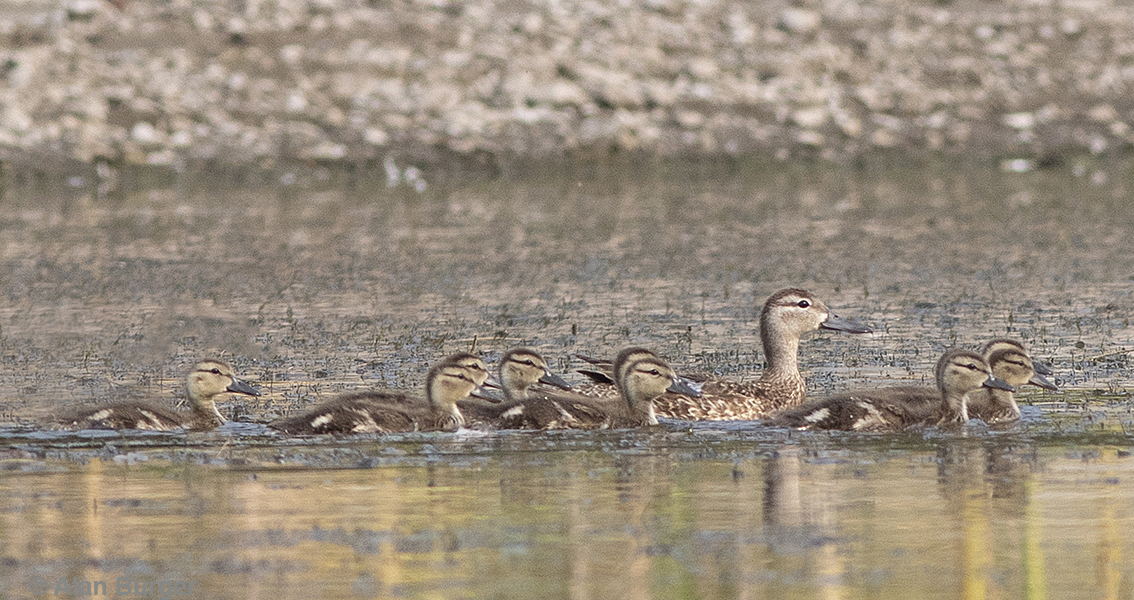
A female Blue-winged Teal with her brood of ducklings. This is one of the less common duck species breeding here – I encountered only two females with ducklings
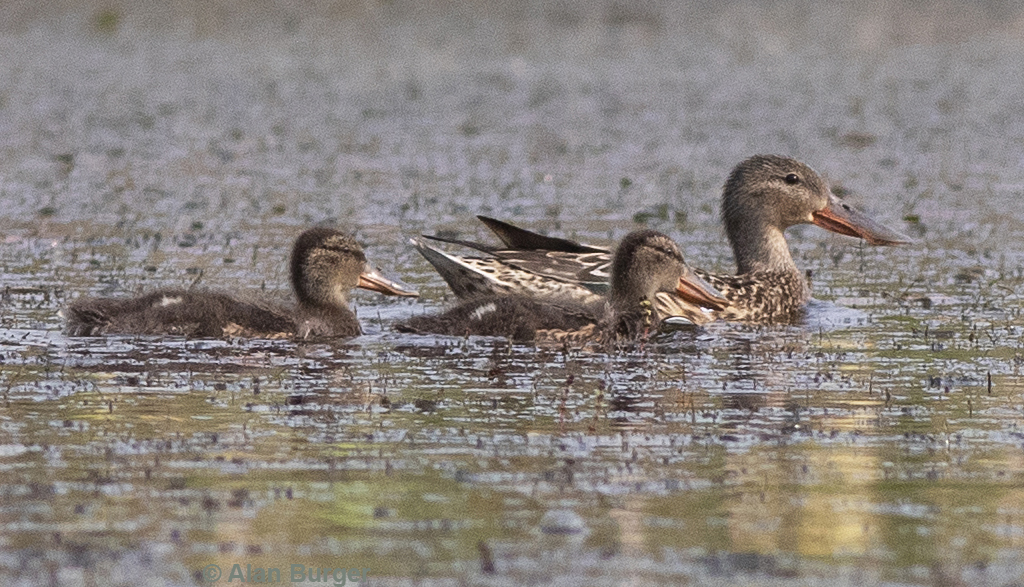
The huge beak easily identifies a female Northern Shoveler, with her ducklings. Another uncommon duck on this lake – probably only 2-3 pairs breed here.
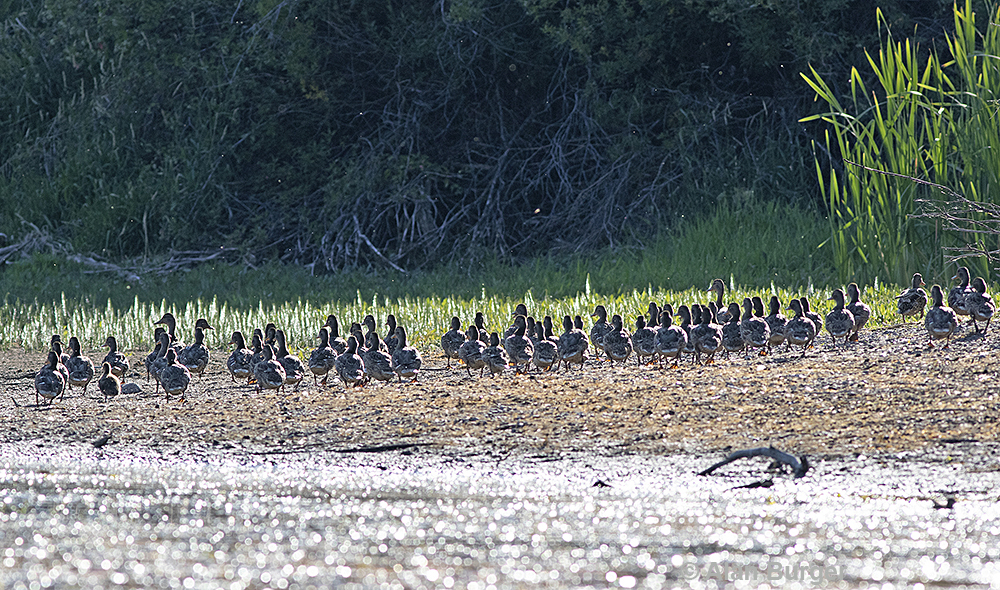
Mallards are by far the most common breeding duck on the lake – this horde is mostly comprised of half-grown ducklings, all staying together with a few adults in between.
Other bird species that breed at or near the lake and use the lake as their primary source of food are Bald Eagles, Osprey, and Belted Kingfishers.
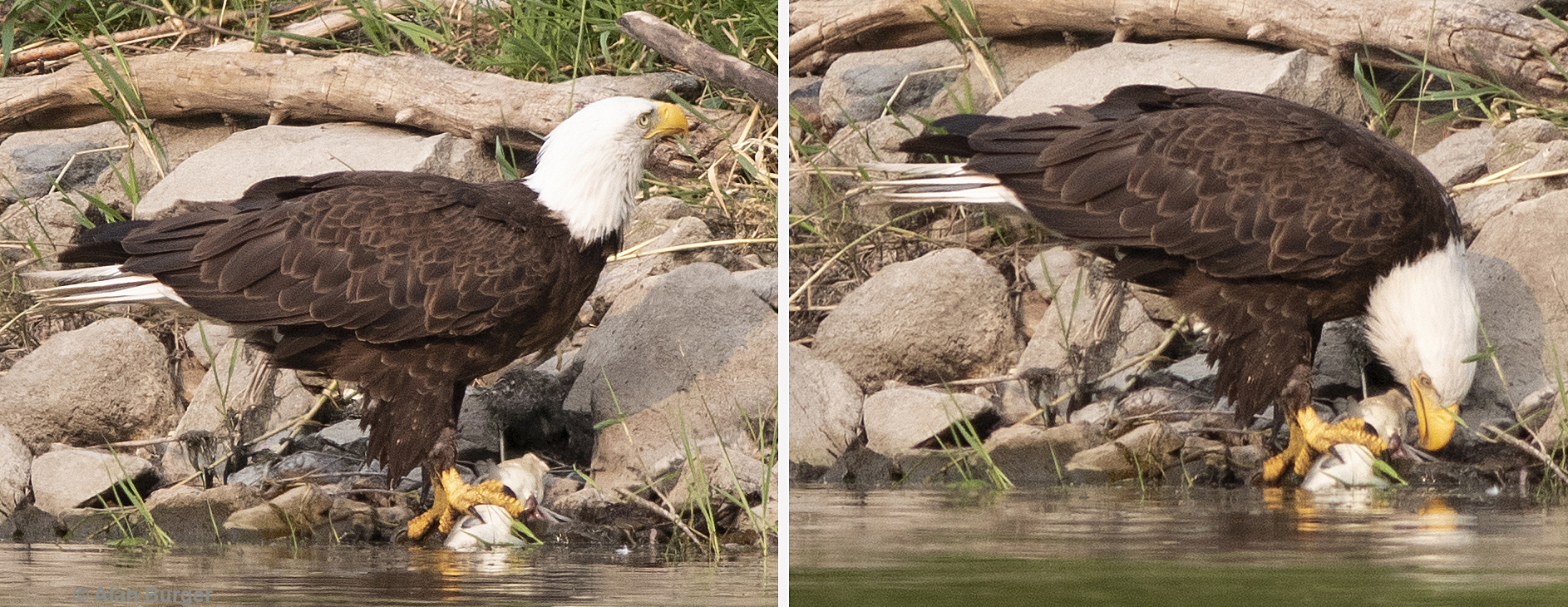
An adult Bald Eagle with a large fish – probably a sucker, one of the more common large fish in the lake. One pair of eagles has a nest visible from the lake and another pair probably nests nearby.

This immature Bald Eagle was one of 5 or 6 regularly seen at the lake through the summer.
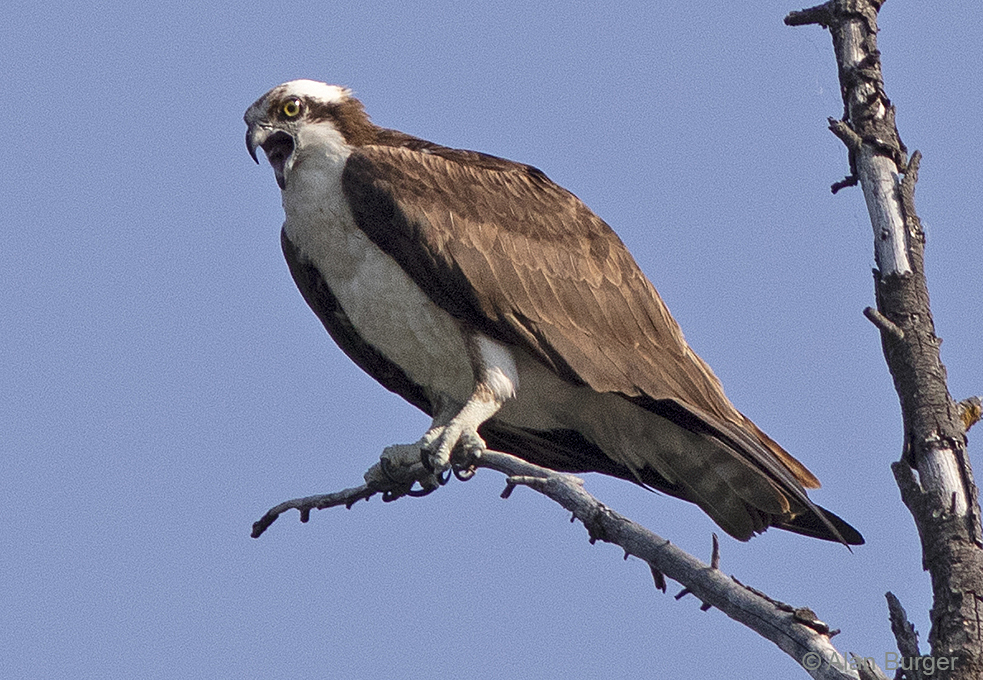
An Osprey calling – there is likely another conspecific in sight. One or possibly two pairs of Osprey nest nearby and use the lake as their fishing ground.
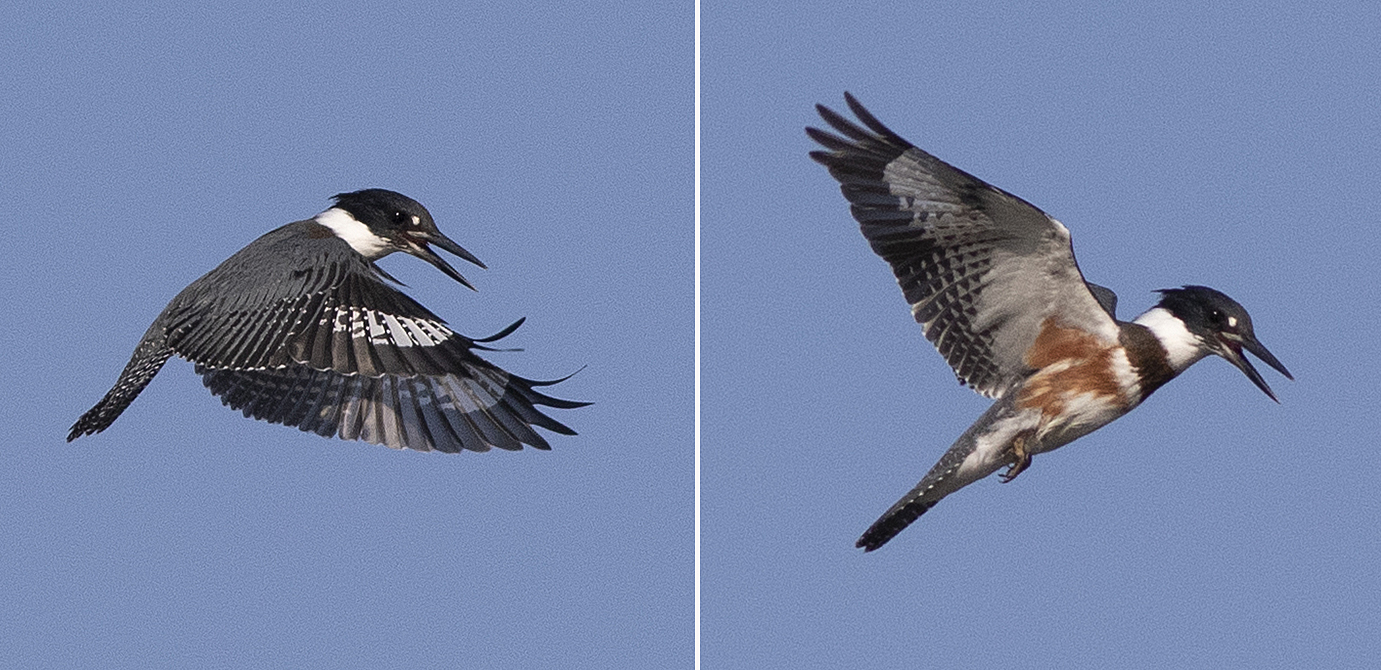
Belted Kingfishers nest in the sandy banks at a couple of locations on the lake shore. This hovering bird is a female – with chestnut breast markings.
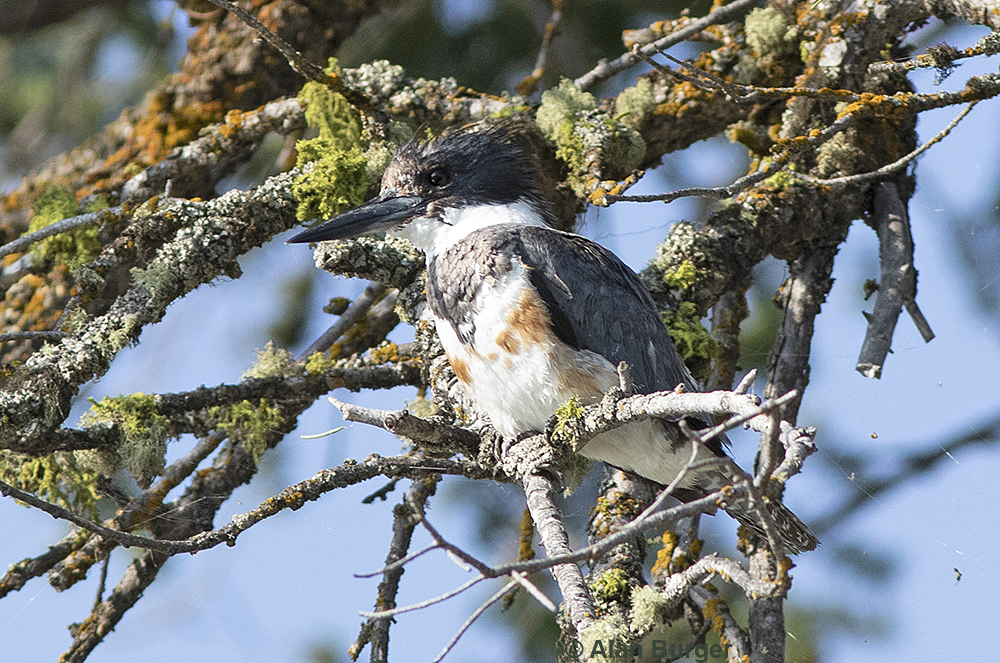
Most often the Belted Kingfishers forage by sitting on perches overlooking the water and plunging down into the water when a fish is spotted.
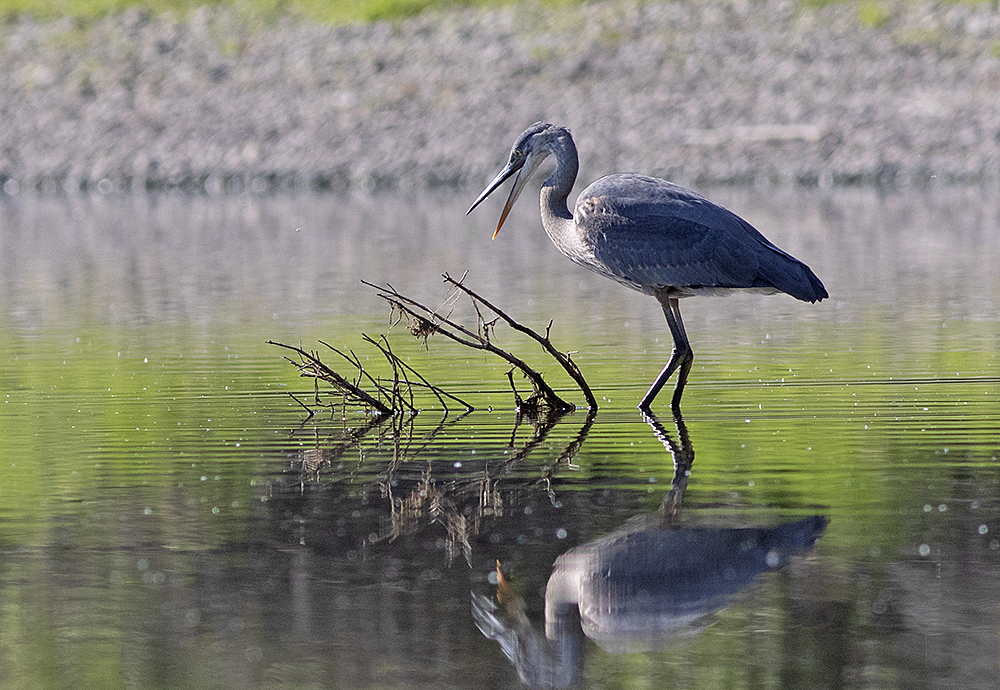
I usually see 4-6 Great Blue Herons foraging for fish along the shoreline of Mamit Lake.
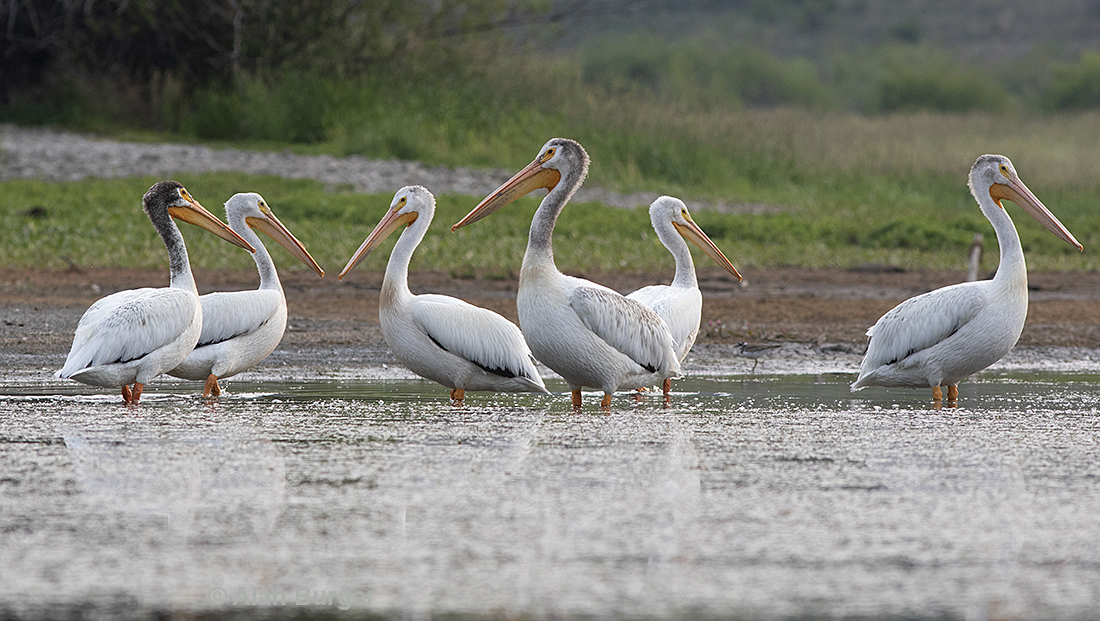
White Pelicans do not breed on Mamit Lake but this is a favourite spot for immature birds to spend much of the summer. At one stage there were 45 pelicans at the lake – feeding and resting.
Birds are not the only interesting wildlife at Mamit Lake ……
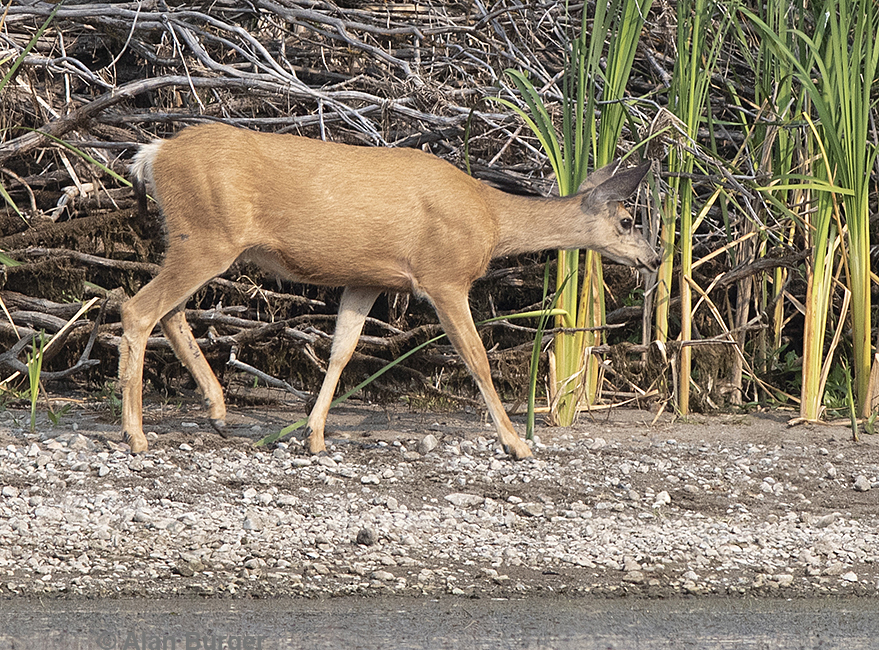
I see several Mule Deer every time I paddle around the lake in summer and fall.
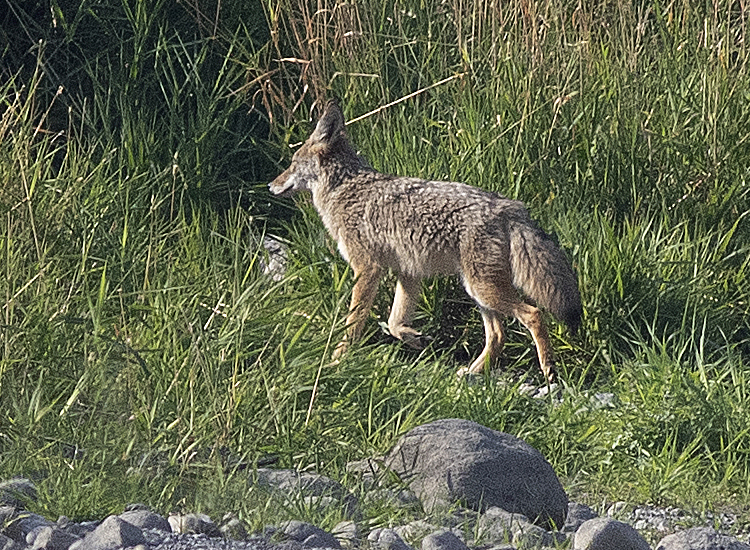
I regularly see Coyotes sniffing along the shoreline, but they are very wary and usually disappear into the thickets when they see me in my kayak.
Migrant shorebirds are one of the main features of Mamit Lake and I eagerly anticipate getting there from late July through early October to see what species might have arrived. Many of these birds breed thousands of km away in the arctic tundra but stop off to feed, often for week or two, on their southward migrations.
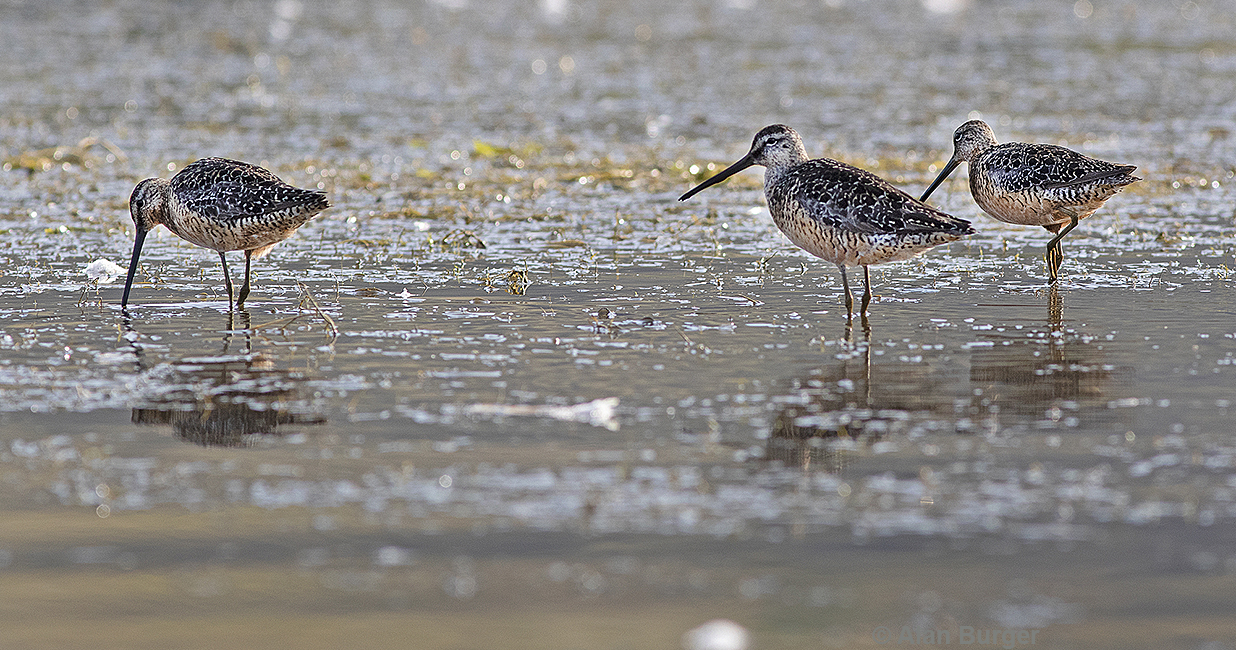
Long-billed Dowitchers are regular visitors to Mamit Lake on their southward migration. These birds are a long way from their arctic tundra breeding grounds, but on 27th July they still have most of their cinnamon breeding plumage.
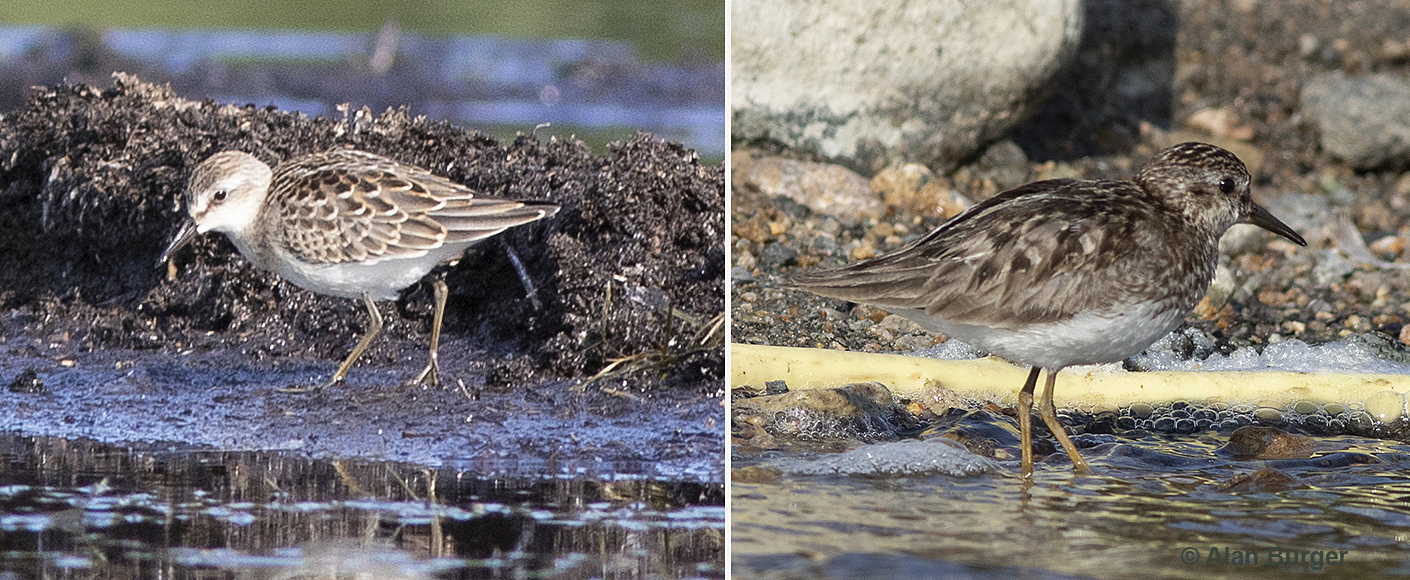
Here are two of the regular small “peep” sandpipers that visit the lake in late summer – Semi-palmated Sandpiper on the left and Least Sandpiper on the right. Their leg colour, beak shape and plumage are identification features.
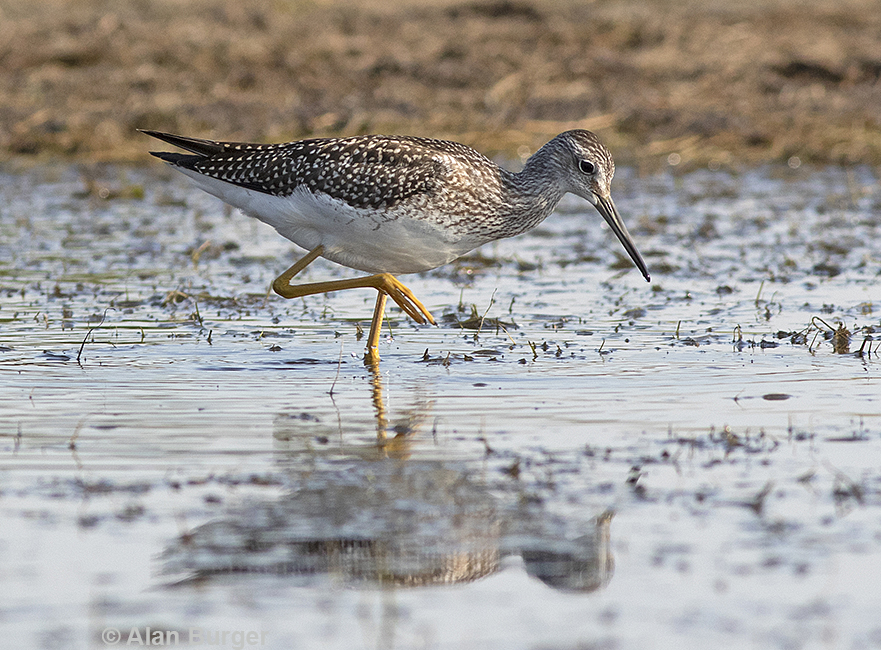
The elegant Greater Yellowlegs are regular visitors and always a delight to watch.
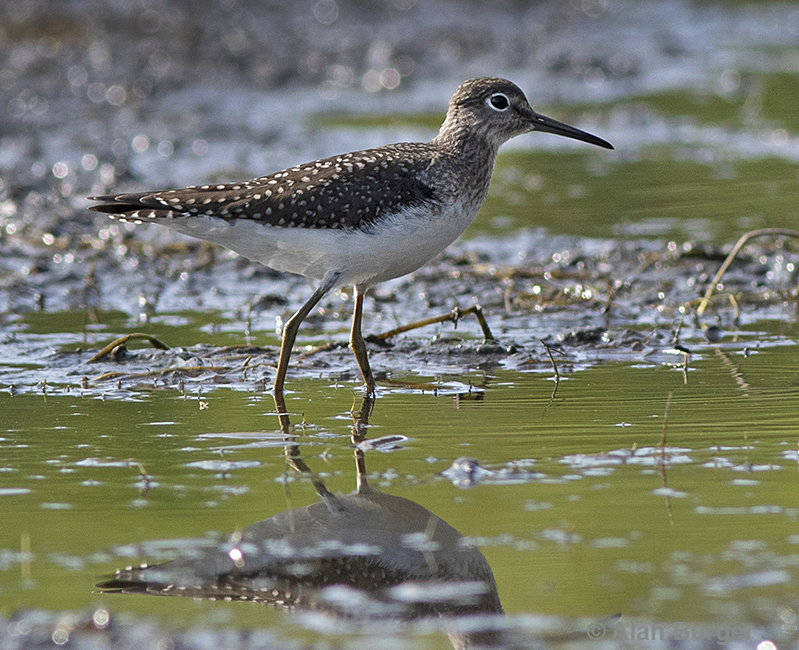
Solitary Sandpipers are normally an uncommon species in our area, but in 2023 they were seen in many nearby wetlands and there were 2 or 3 on Mamit Lake for much of the late summer.

This Solitary Sandpiper provided some goofy entertainment – first getting something dislodged from its throat and then running across the mudflats.
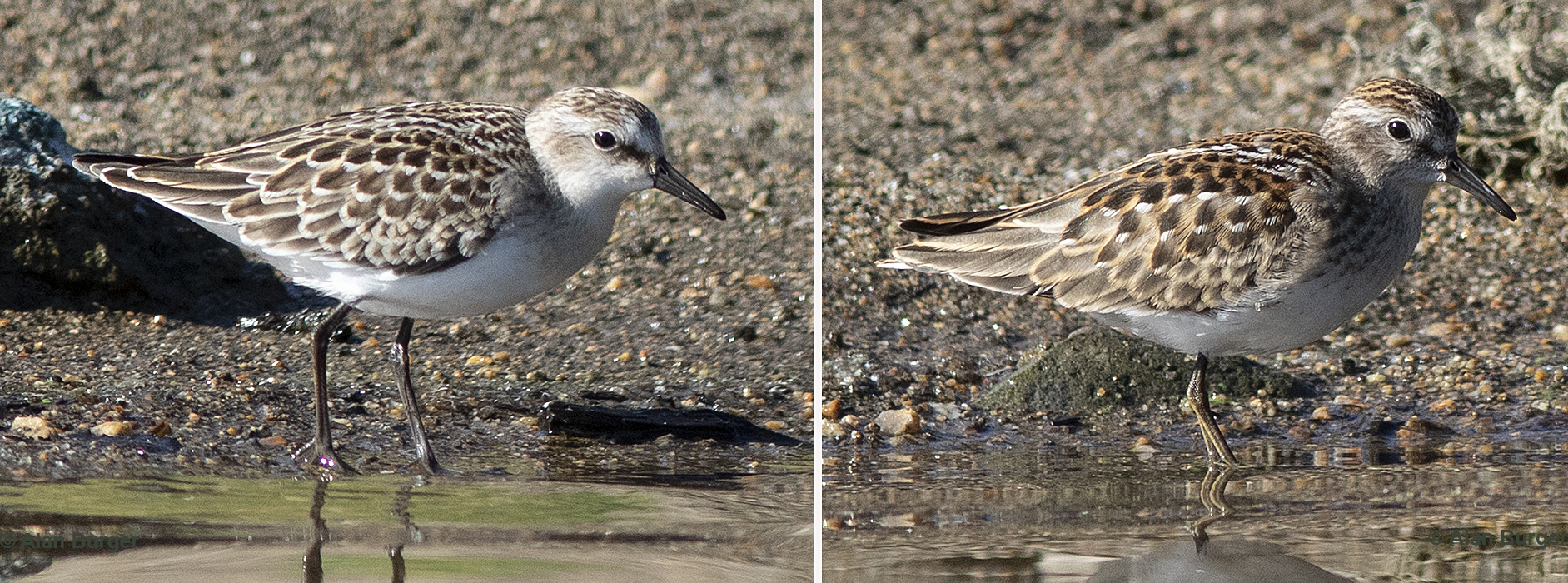
Another contrast of migrant peeps – Semipalmated Sandpiper left and Least Sandpiper right.
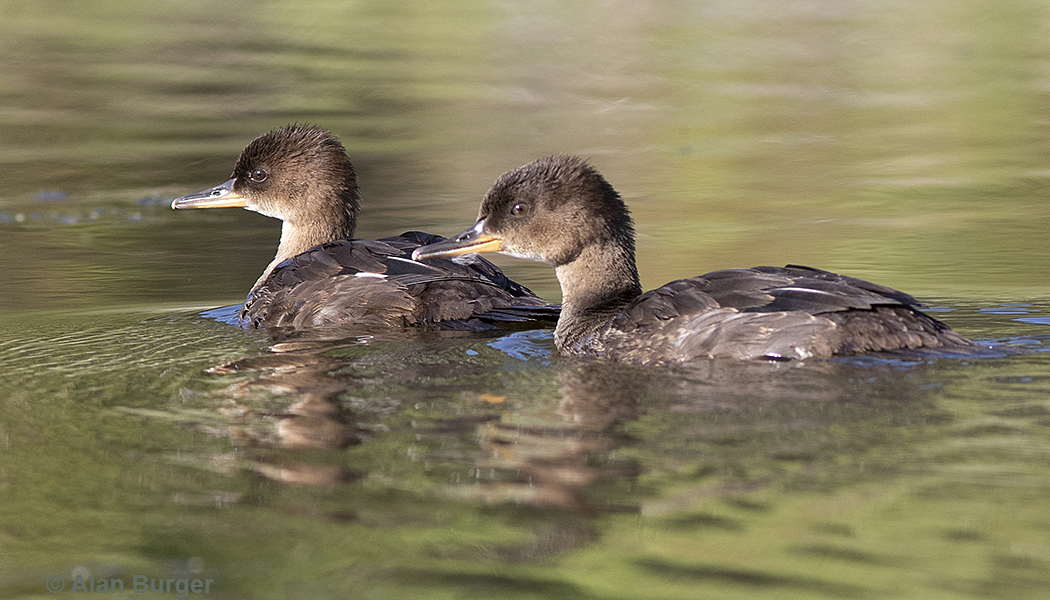
Juvenile Hooded Mergansers – likely born and raised here at Mamit Lake. Look closely and you can see the serrated ridges on the inner beaks of these birds – these tooth-like ridges allow mergansers to catch slippery fish and aquatic invertebrates like dragonfly larvae.
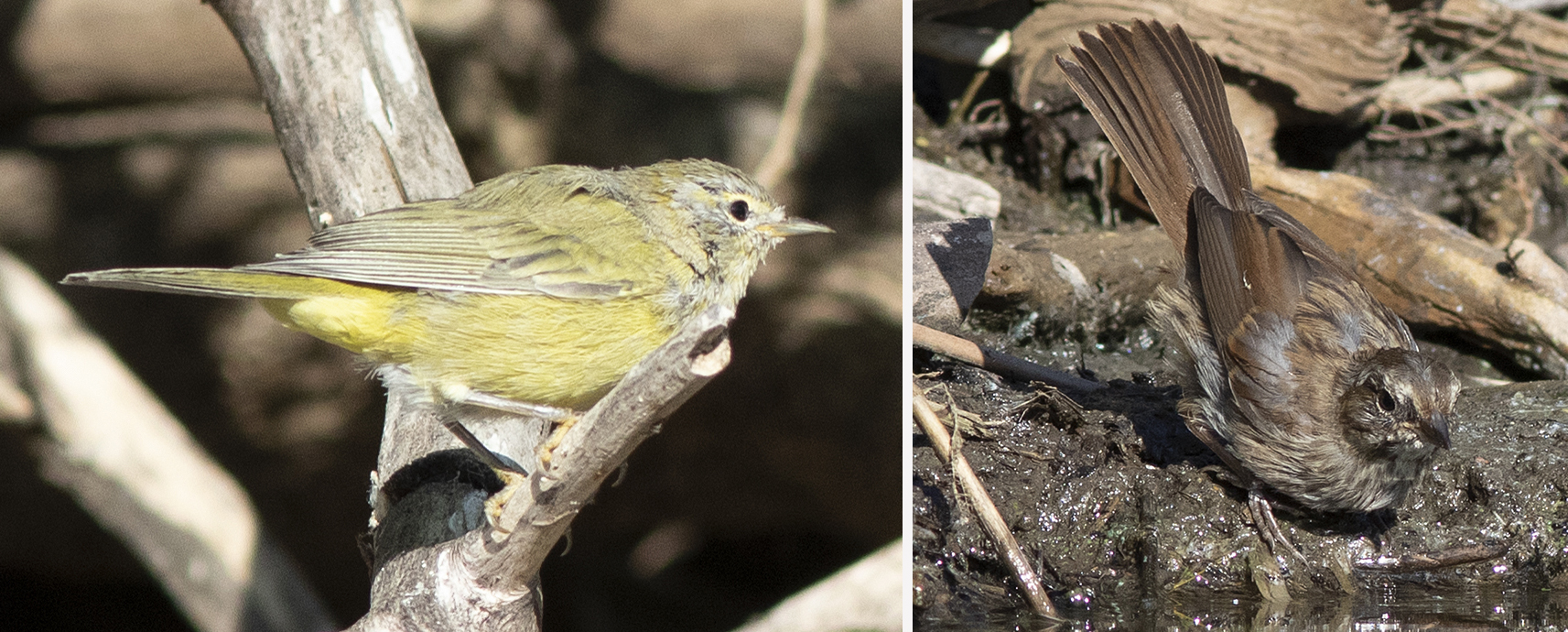
Taking photos of land birds from a kayak on the lake is not easy. Here are a couple: an Orange-crowned Warbler in the shoreline bushes (left) and a Song Sparrow having a bath (right).
By August we get a continual influx of migrant shorebirds – mostly species that breed a long way away.
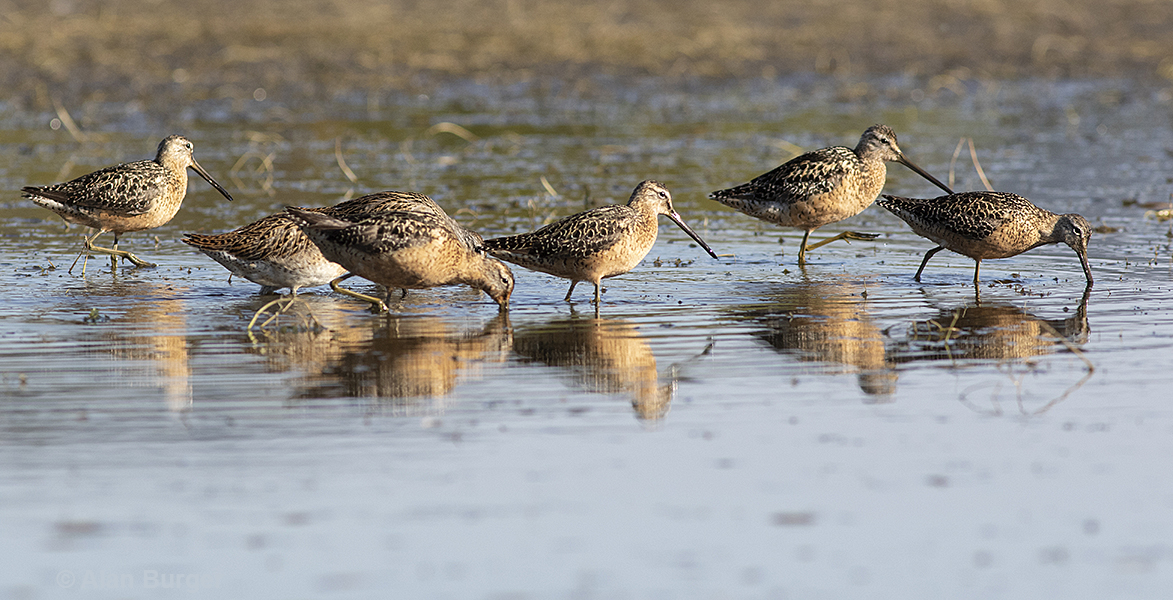
By August there are usually several dowitchers stopping off at the lake – mostly Long-billed Dowitchers, but see the next photo …..
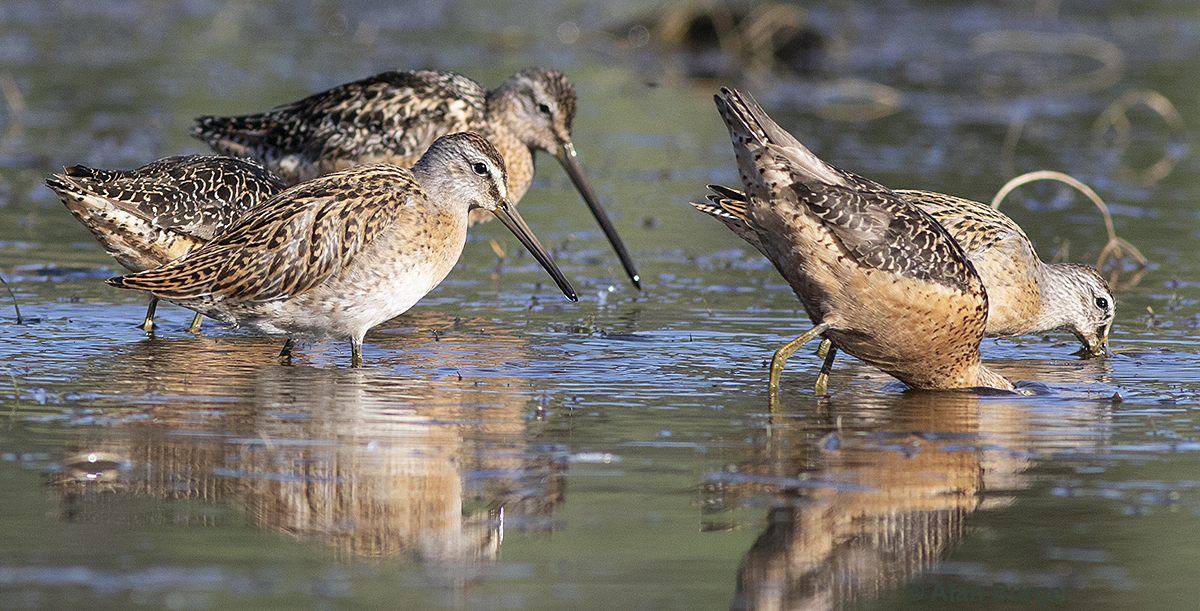
This photo shows two species of dowitchers. There are two Short-billed Dowitchers – the bird at the front left and the bird furthest right at the back. This species is unusual in the BC Interior but more common along the coast. The remainder are all Long-billed Dowitchers – the species most likely to be found in the BC interior. Notice that the Short-billed Dowitchers have orange-and-black tiger striping on their dorsal feathers – one of the diagnostic features of this species.
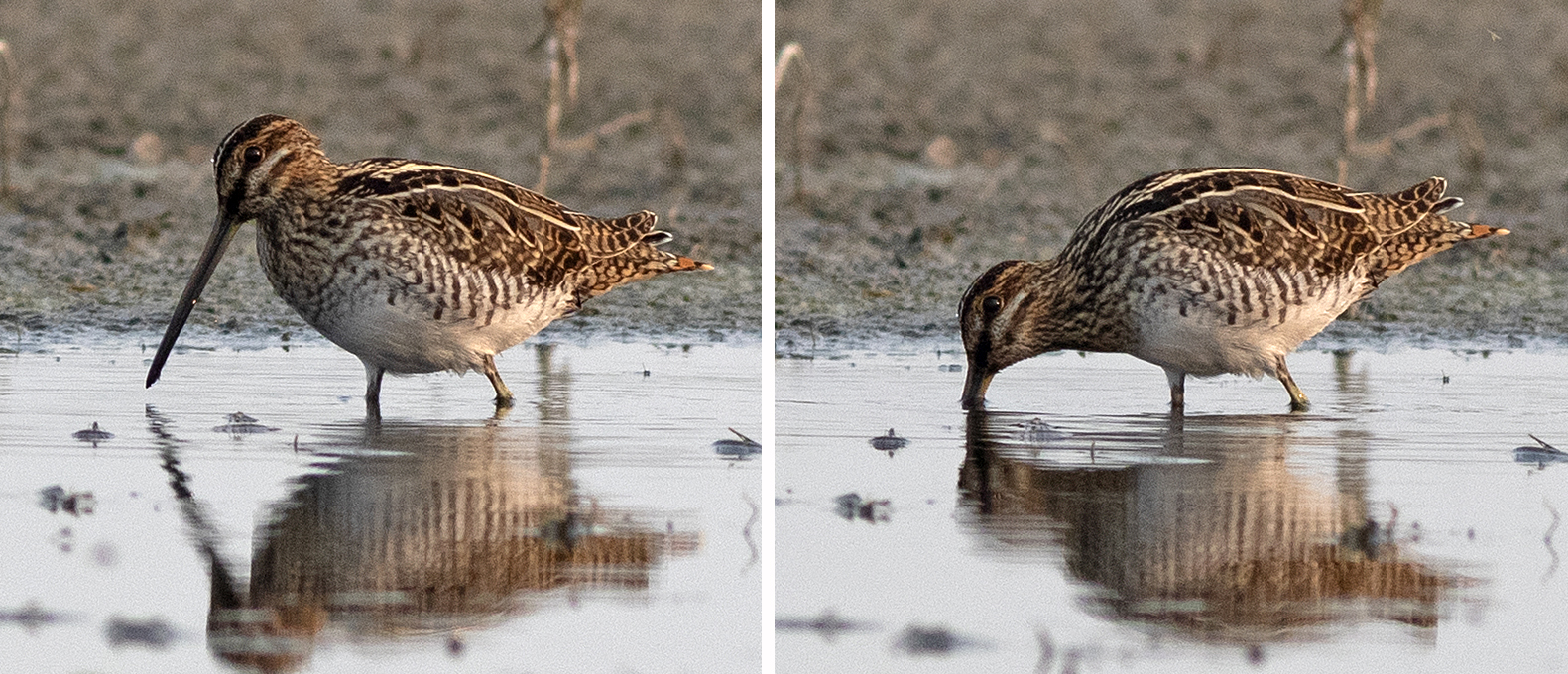
Another long-billed shorebird, but the plumage is very different from that of the dowitchers. A resident Wilson’s Snipe foraging in the shallows.
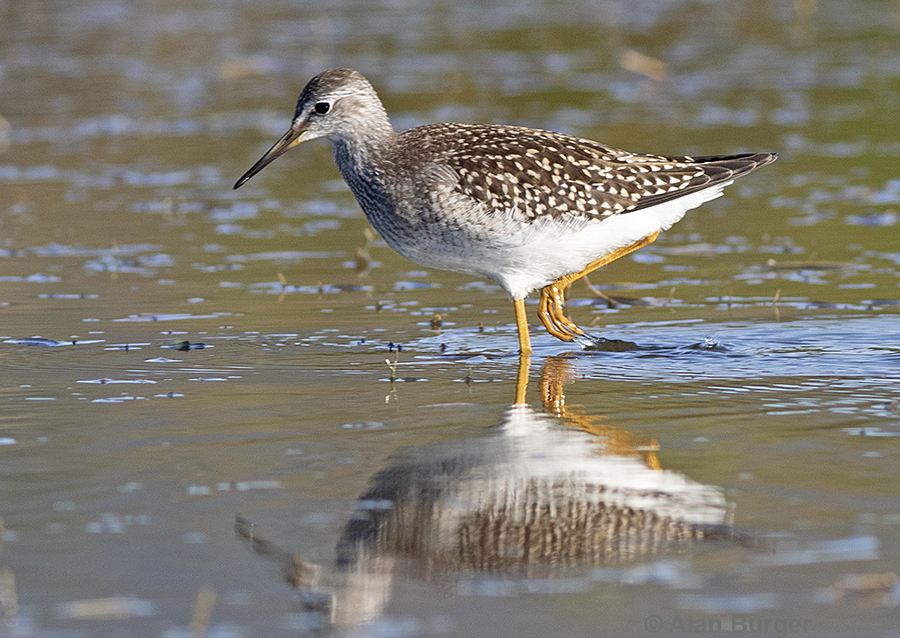
Lesser Yellowlegs usually show up on Mamit Lake in August and there might sometimes be a dozen or more on the lake.
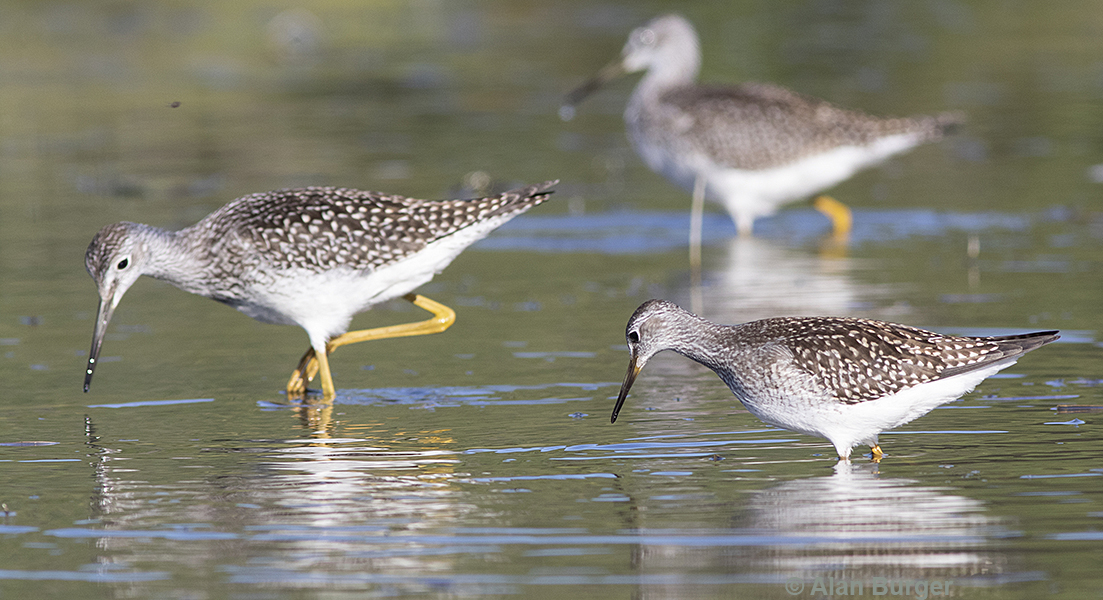
Compare the yellowleg species – Greater Yellowlegs on the left and Lesser Yellowlegs right. When they are side-by-side like this recognition is easy, but when alone one has to look at bill-length and subtle plumage features to identify them.
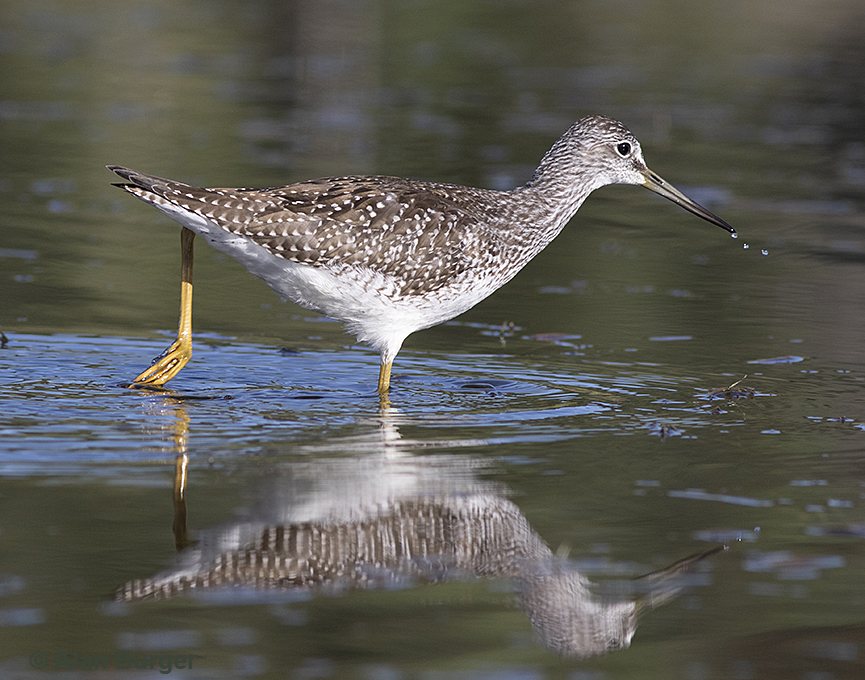
Another graceful Greater Yellowlegs. If the bill is longer than the head length that indicates Greater.
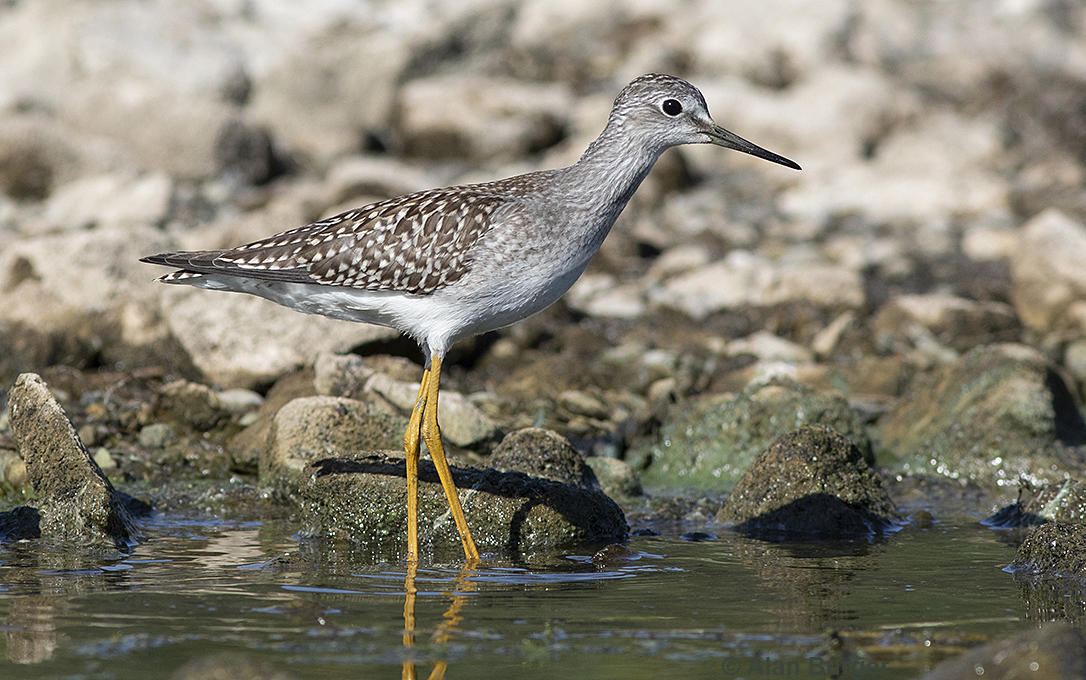
An equally elegant Lesser Yellowlegs. If the bill is about head length then it indicates Lesser.
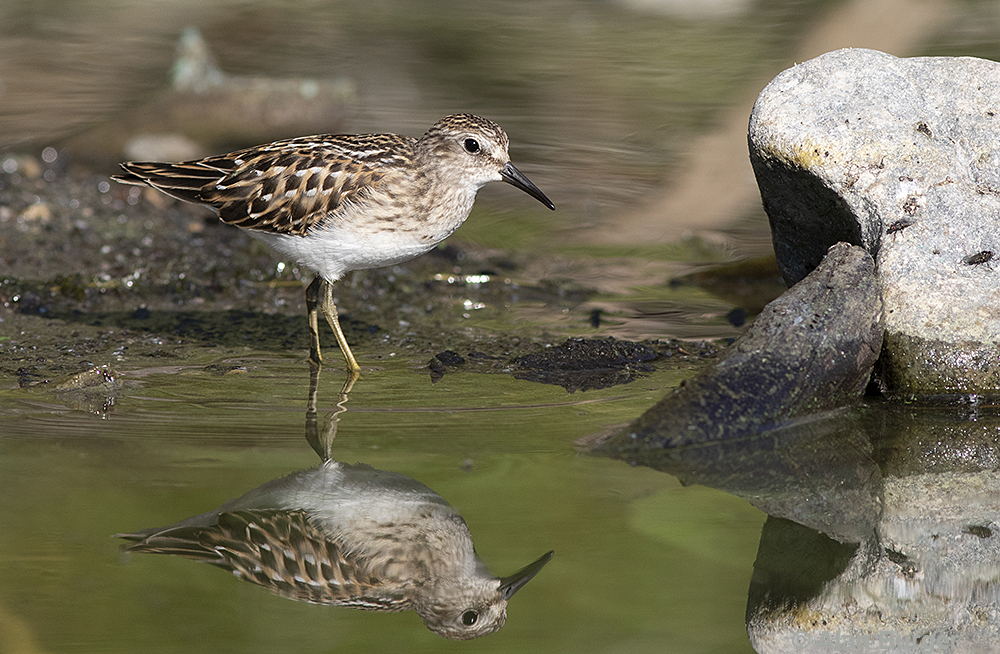
Least Sandpipers can be found for most of August and September at Mamit Lake. Their tiny size and greenish-yellow legs are diagnostic.
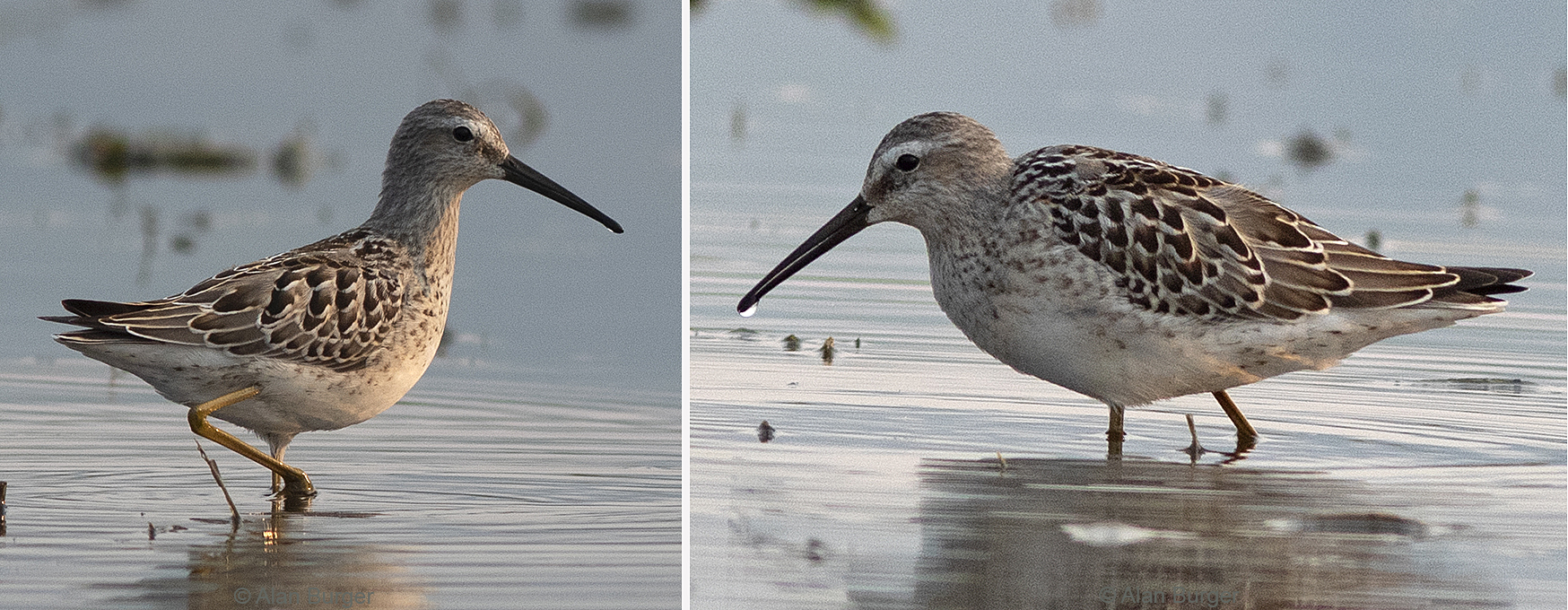
This was a very exciting shorebird to find on Mamit Lake – a Stilt Sandpiper. The long yellow legs and long slightly downturned bill are identification features. Several of this mid-sized shorebird were reported in the Kamloops and Logan Lake area around mid-August in 2023.
There were few shorebirds at Mamit Lake from late August through September and I suspect that was because there was always a Merlin at the lake through this time. These little falcons prey on small shorebirds and land birds and I saw them also harassing much larger birds – kingfishers, magpies and a kestrel.
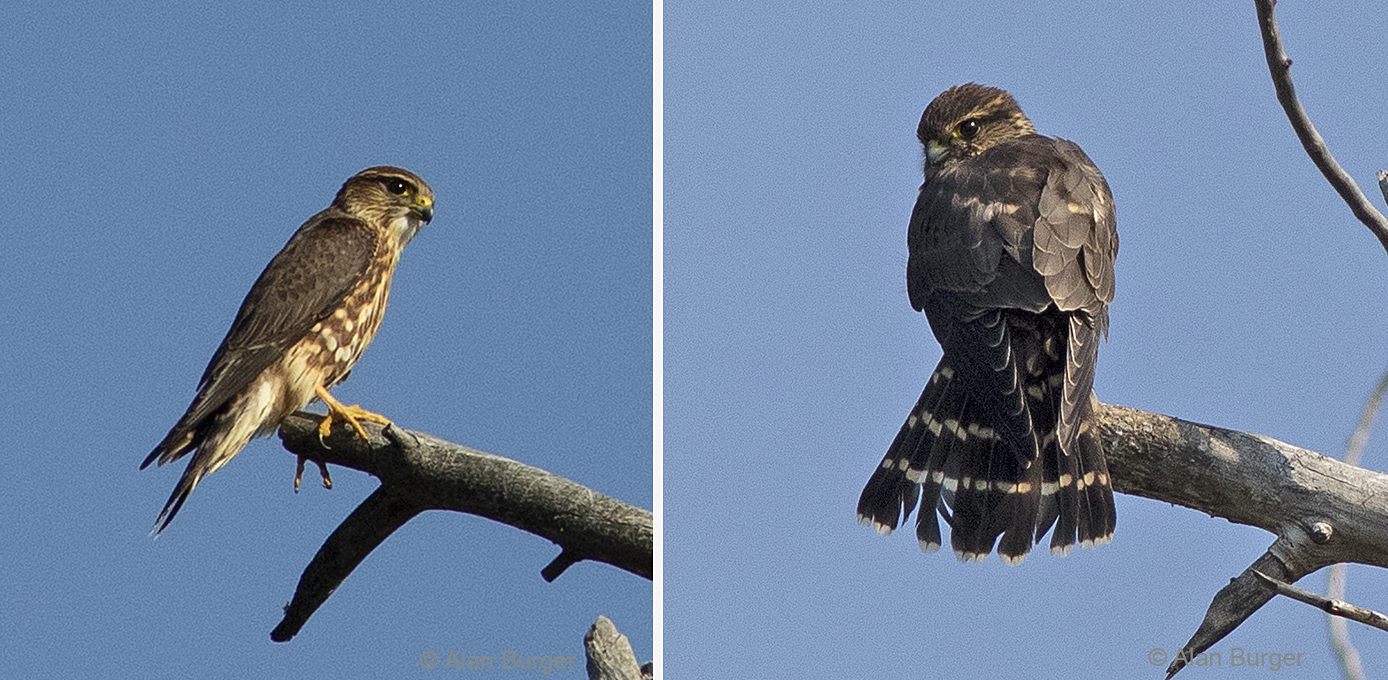
Here are two different Merlins at Mamit Lake – an adult on 2nd September and an immature bird on 27th August 2023.
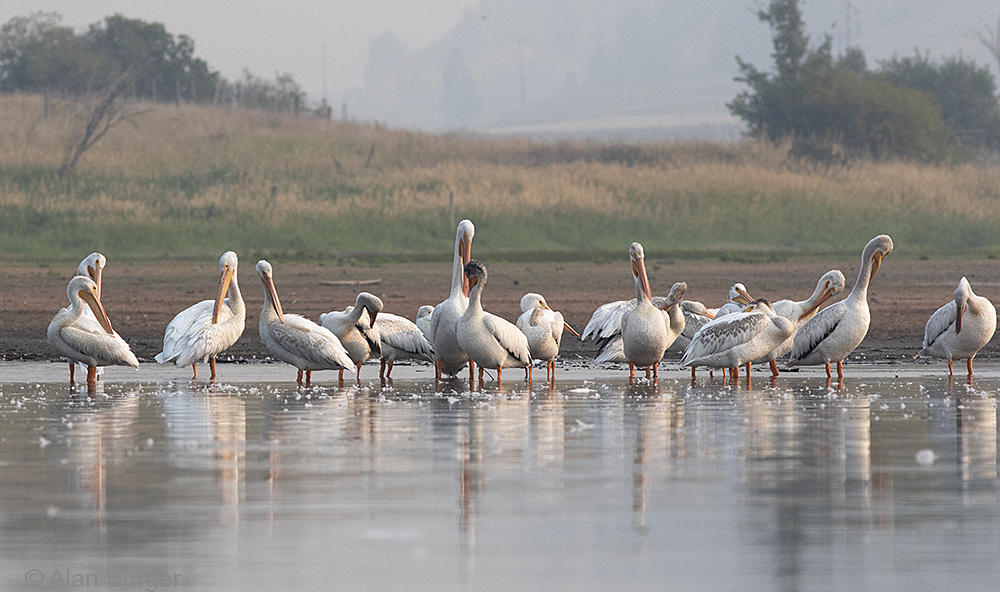
White Pelicans were on the lake for most of the summer with a high count of 45 birds on 6 August 2023. Notice all the feathers on the mudflat – these birds are moulting.
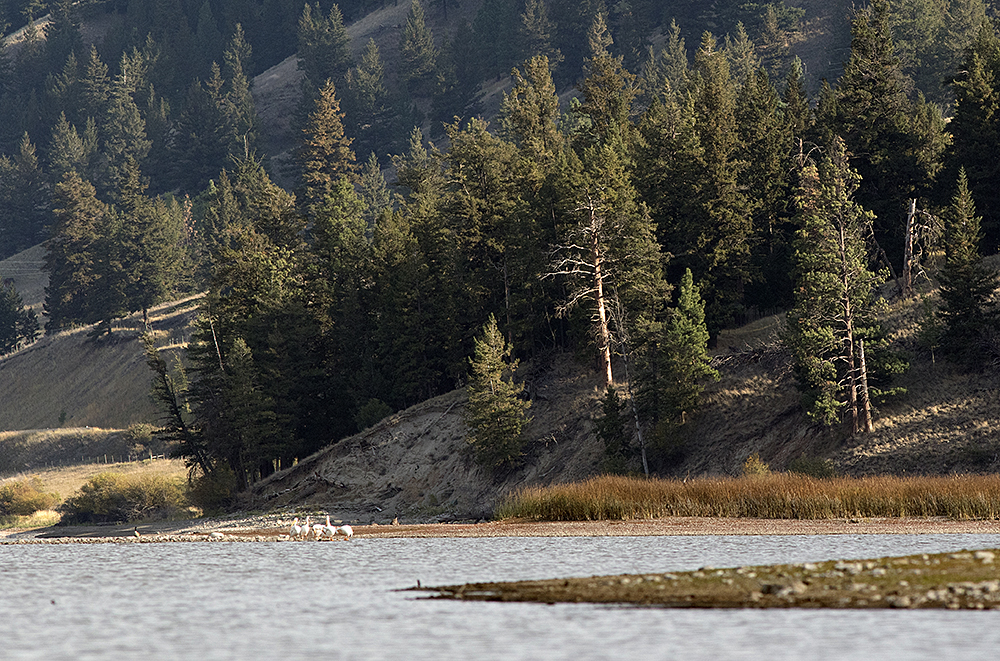
Scenic shot – Mamit Lake on 17th September. Notice the little group of White Pelicans on a tiny island near the far shore.
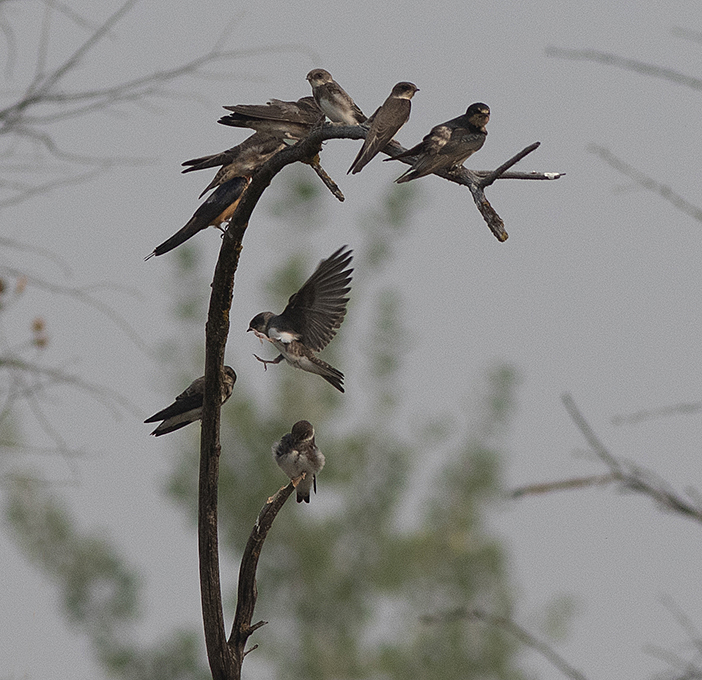
A post-breeding flock of swallows containing mostly Bank Swallows and a couple of Barn Swallows.
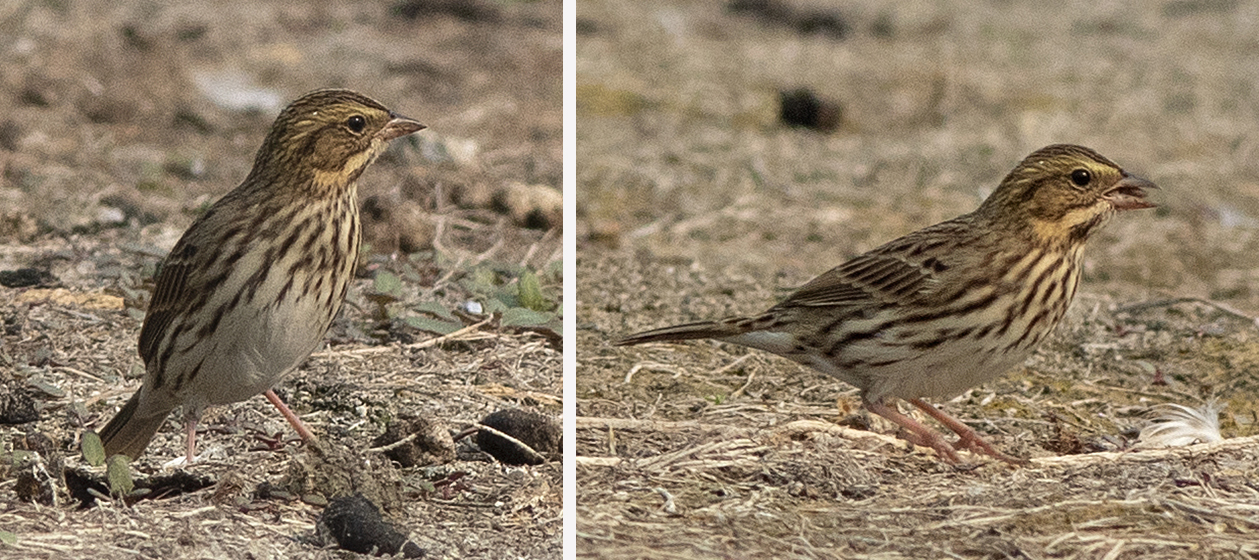
Savannah Sparrows breed in the vegetation bordering the lake but often venture out on the mudflats to feed on seeds and insects.
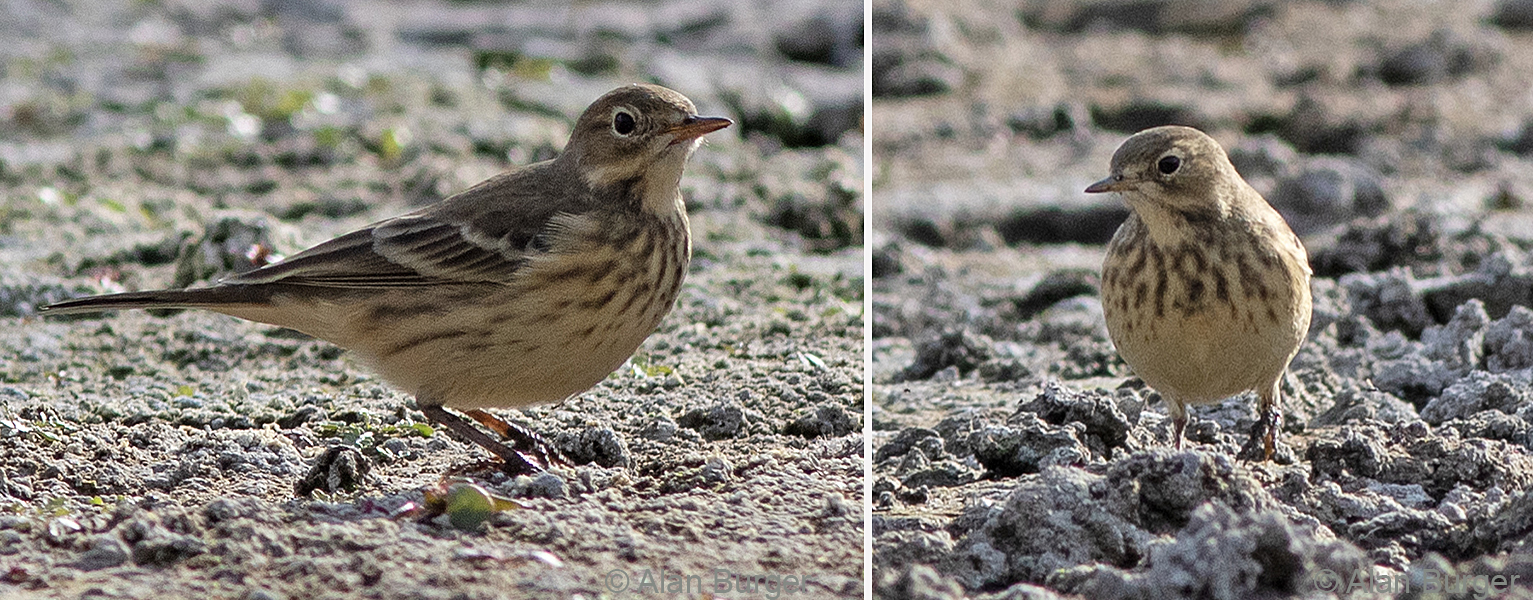
In late September migrating flocks of American Pipits forage on the open mudflats. I counted 129 on 17 September, the day these photos were taken.
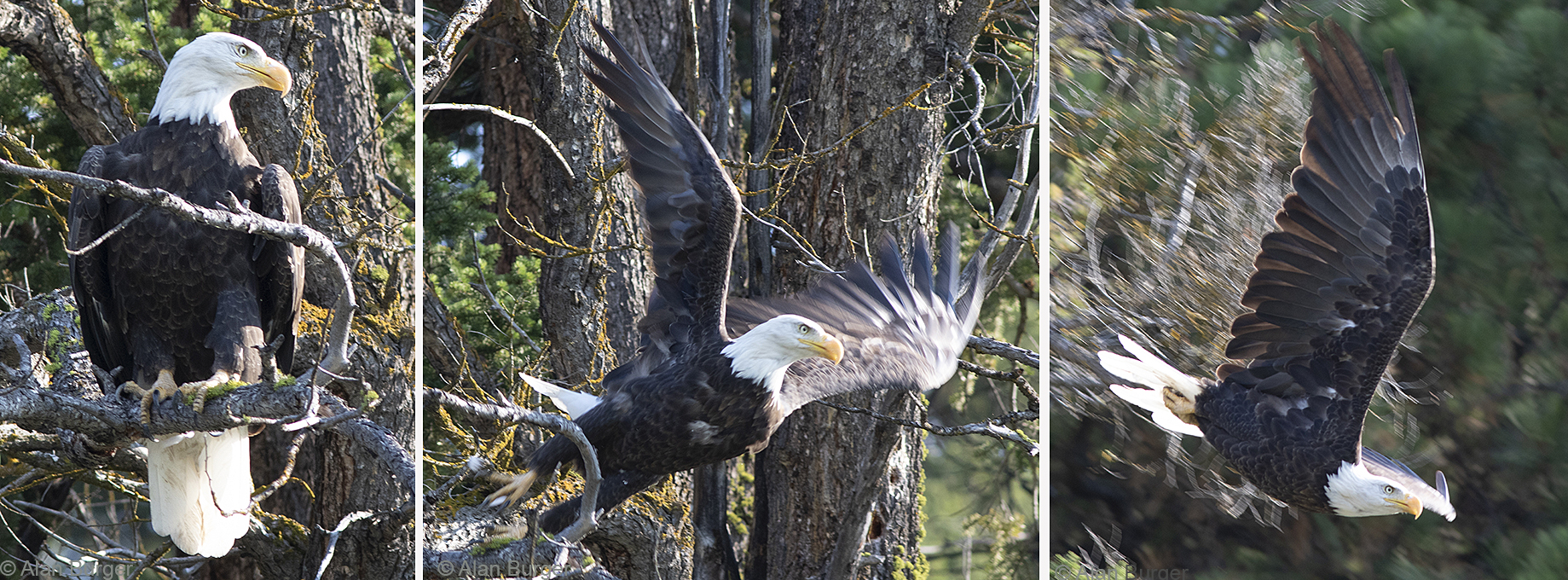
Action from a Bald Eagle – this adult eagle was swooping down to attack a duck on the water – unsuccessfully.
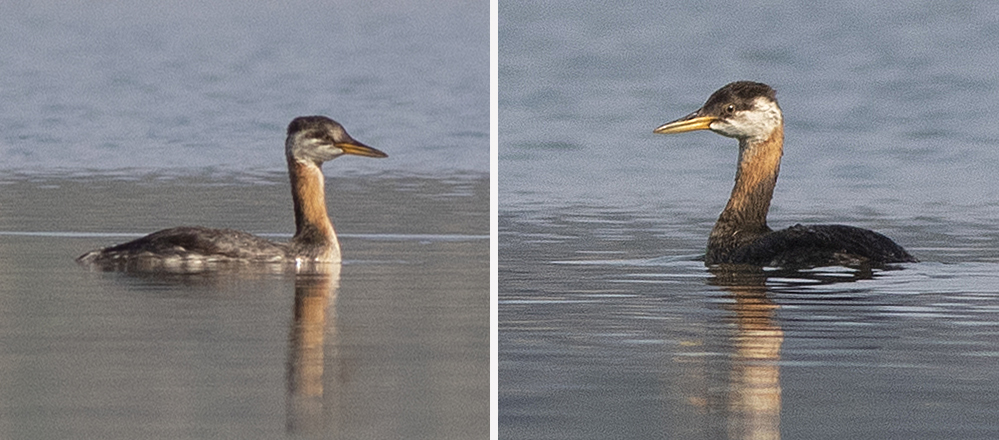
Red-necked Grebes sometimes breed on Mamit Lake. There was a pair here in 2023 but I didn’t see any chicks.
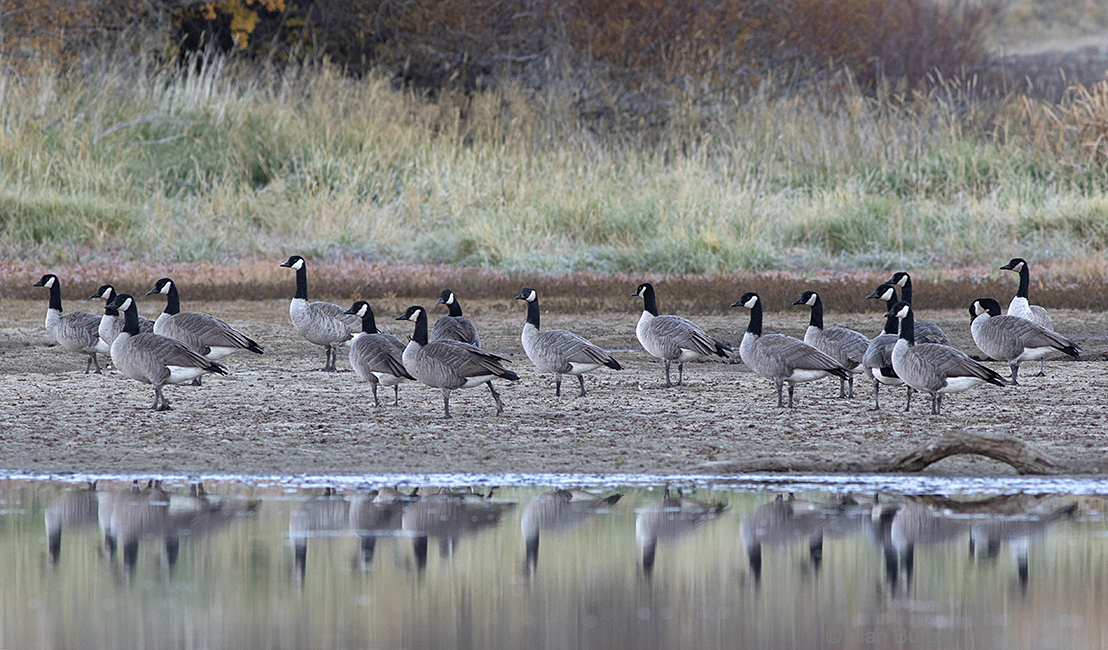
Canada Geese are resident at the lake from early spring until the lake freezes and they raise many goslings here. Some of these birds are likely locally-bred juveniles.
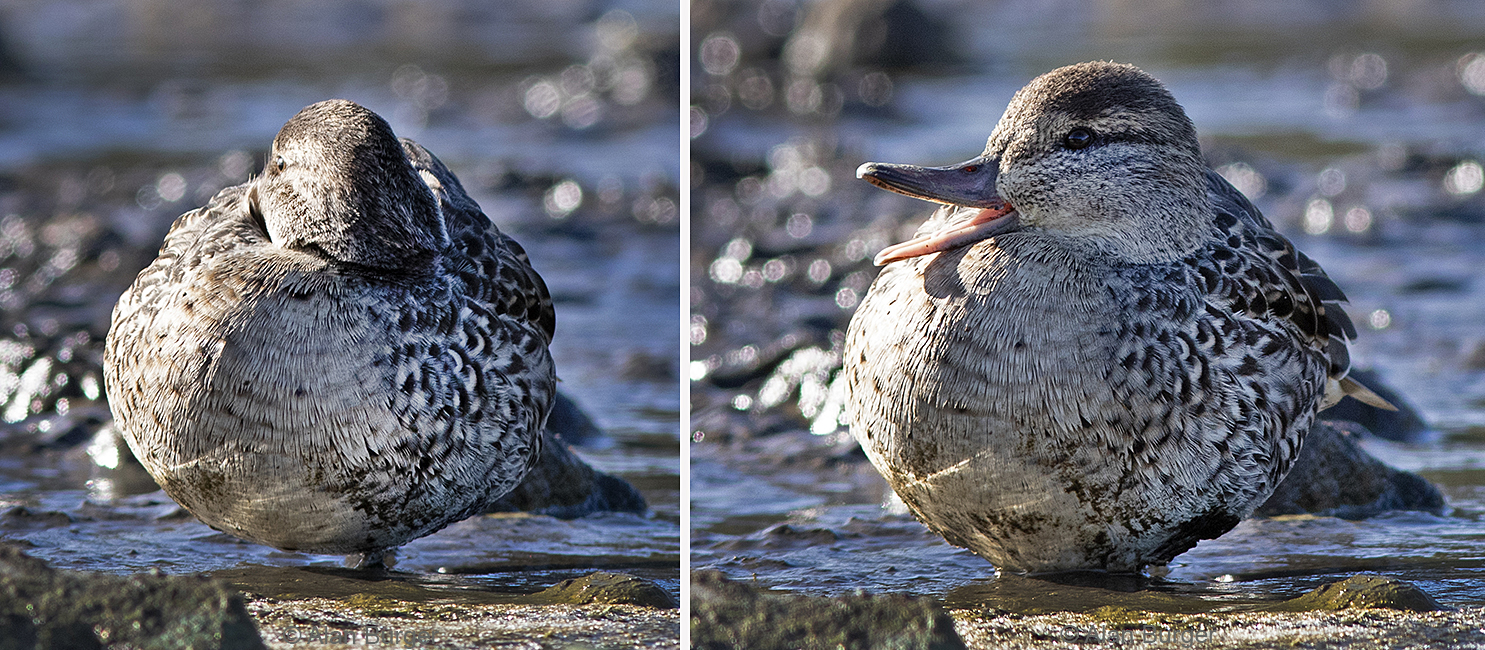
In a kayak it is sometimes possible to quietly drift up to birds and get quite close. This Green-winged Teal appeared to be asleep, but look closely and you can see it was actually watching me. Then it aroused with a big yawn!
By October it is getting downright chilly for early morning paddling on Mamit Lake, but the magnificent fall colours and the chance to find some interesting migrants make it worthwhile.
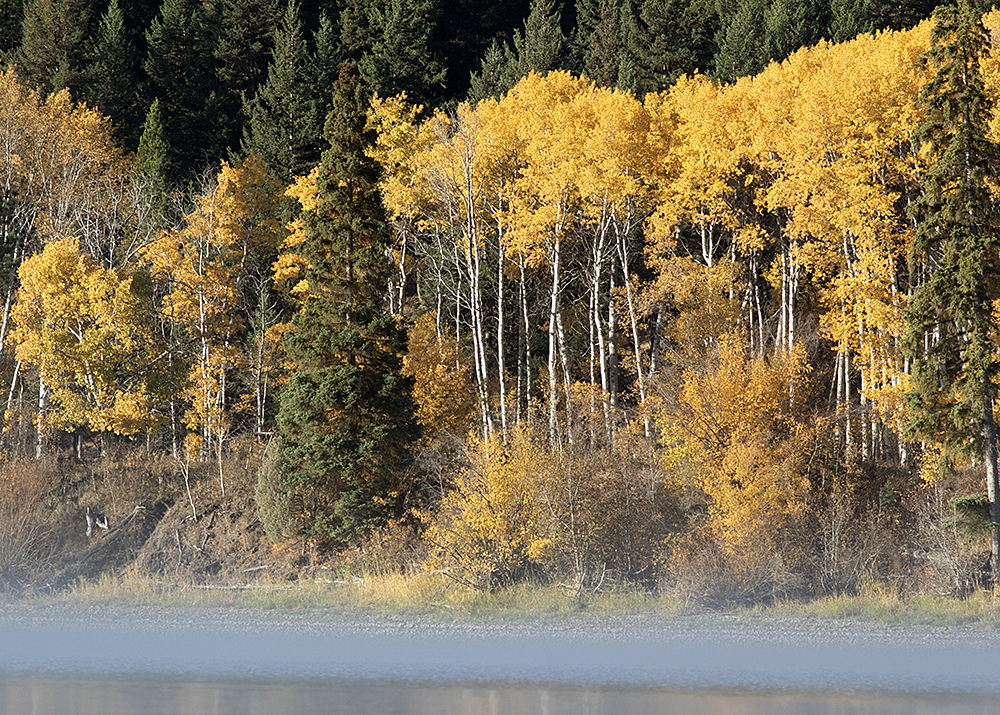
Autumn colours at Mamit Lake on a misty morning – 8 October 2023.
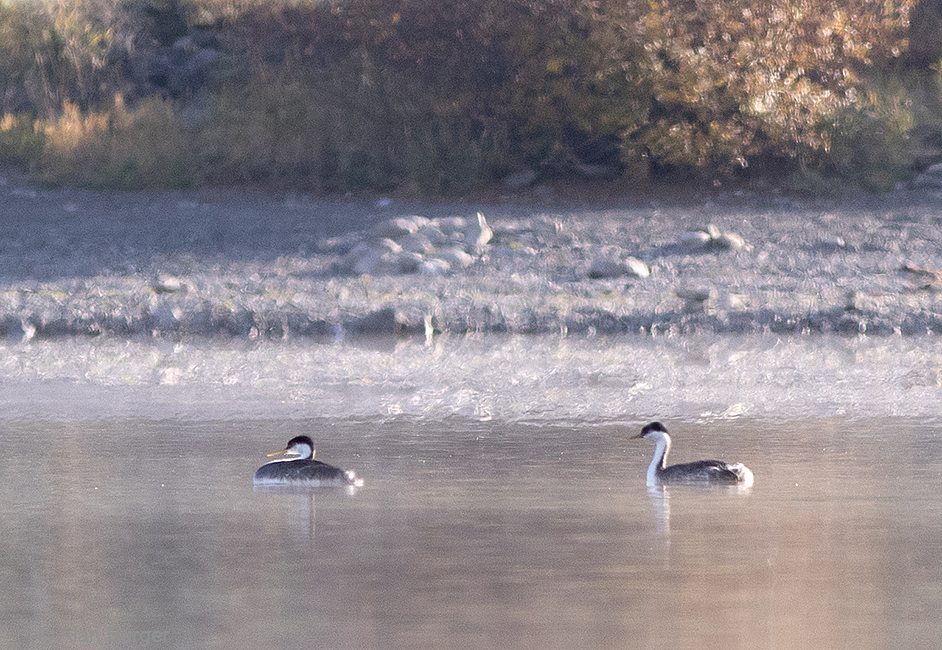
Western Grebes on a cold misty morning – 8 October 2023. This species breeds on Shuswap Lake more than 100 km from here and these birds are probably from there, making their way to the coast to overwinter.
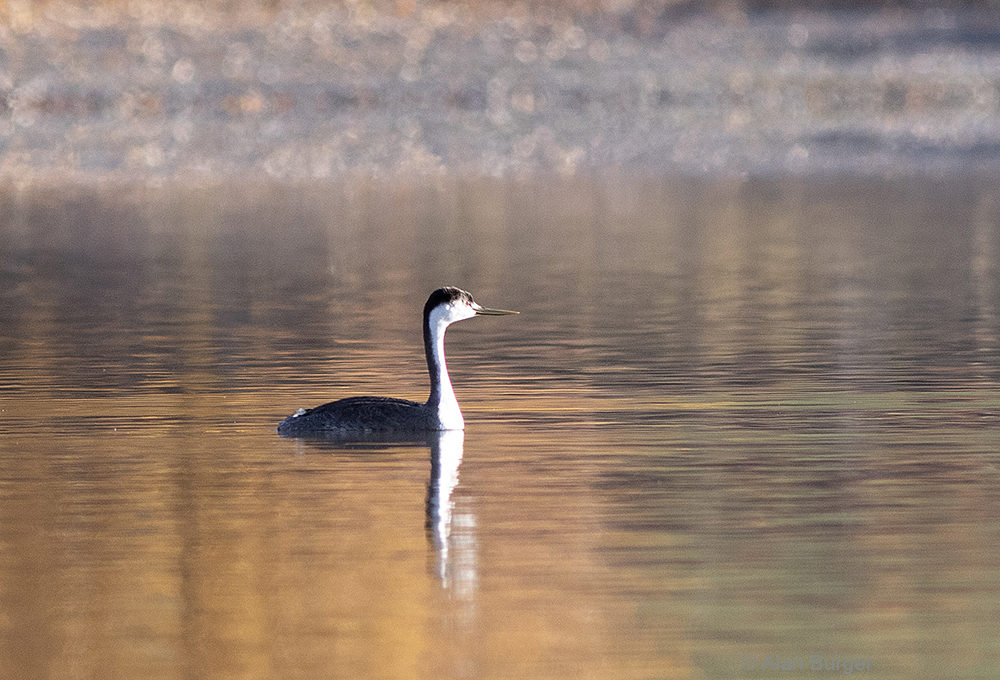
A Western Grebe in the colourful reflection of fall trees.
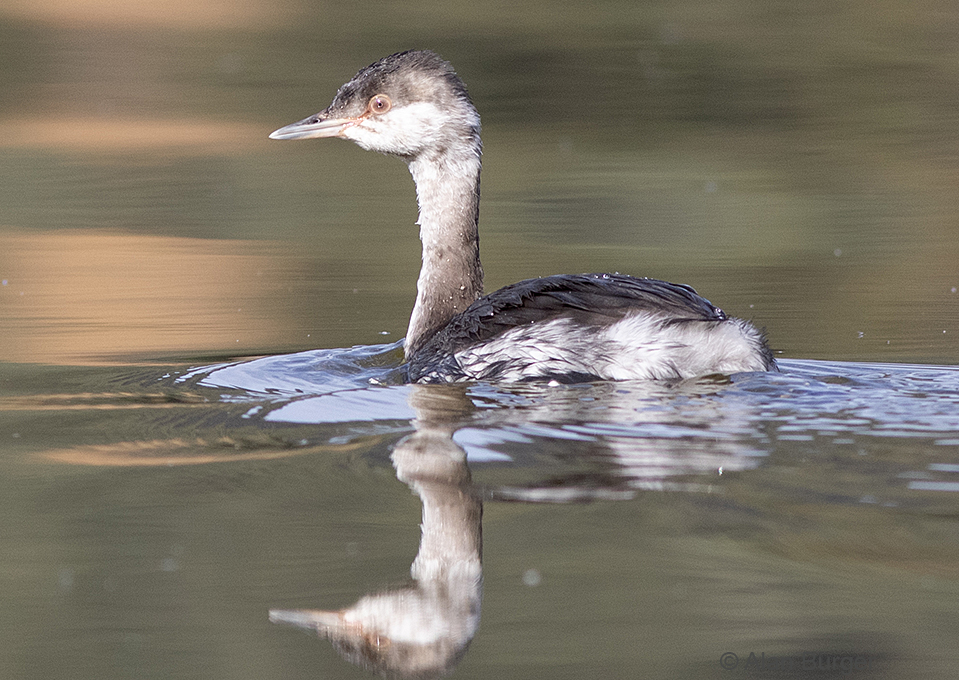
Horned Grebes are another species that doesn’t breed on Mamit Lake but several of them stop off on the lake in early fall as they migrate to the coast.
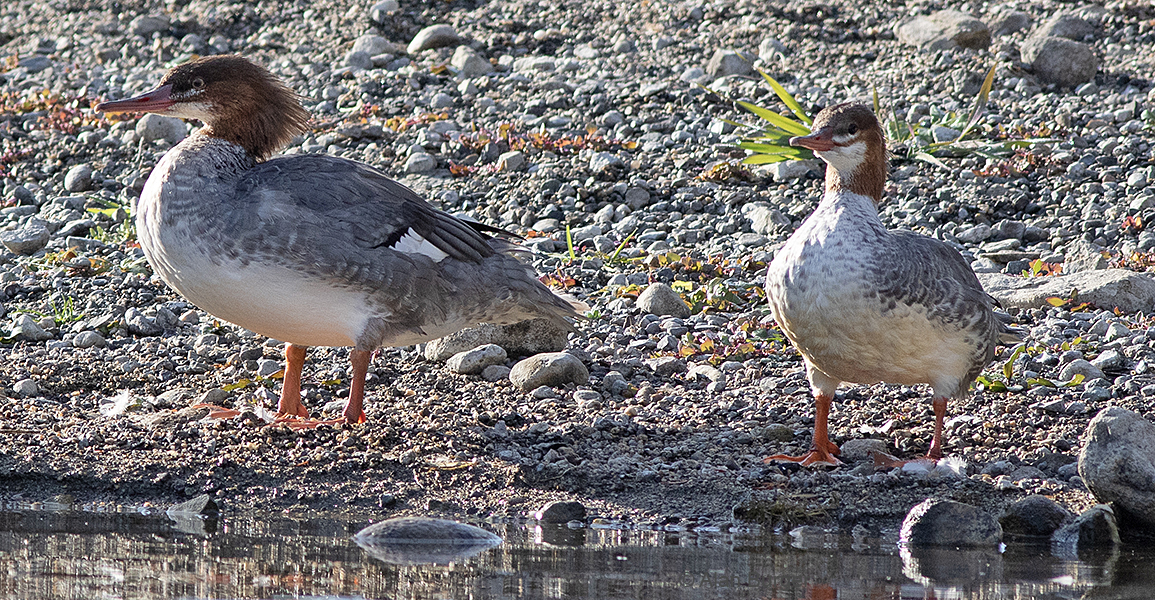
Common Mergansers – another species that I see on Mamit Lake only on their fall migration. But there can be several dozen of these fish-eating ducks on the lake in October.
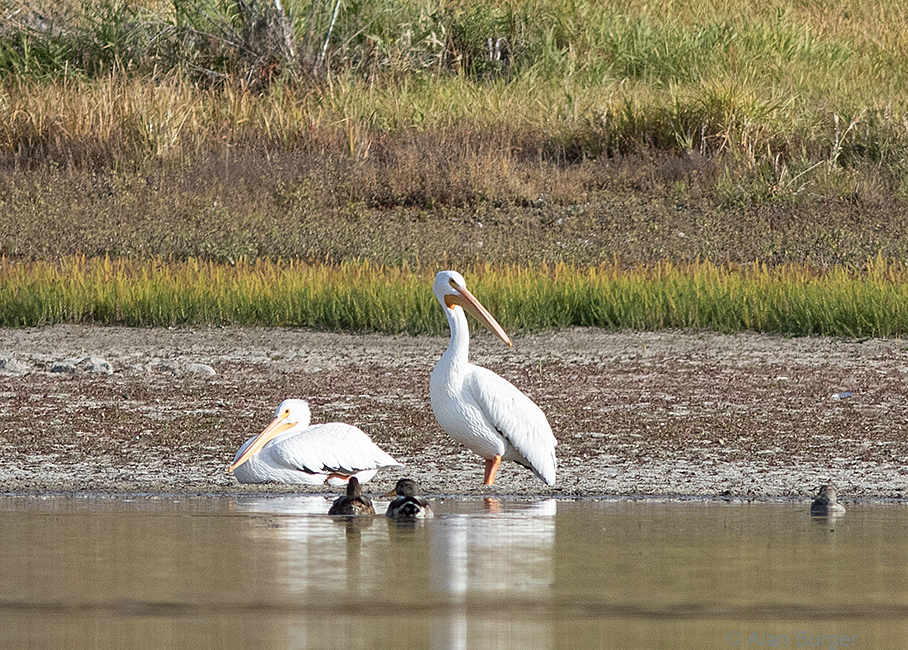
The last of the pelicans – these two were still on the lake in early October, but gone by mid-October.
But they weren’t the last big white birds on the lake …..
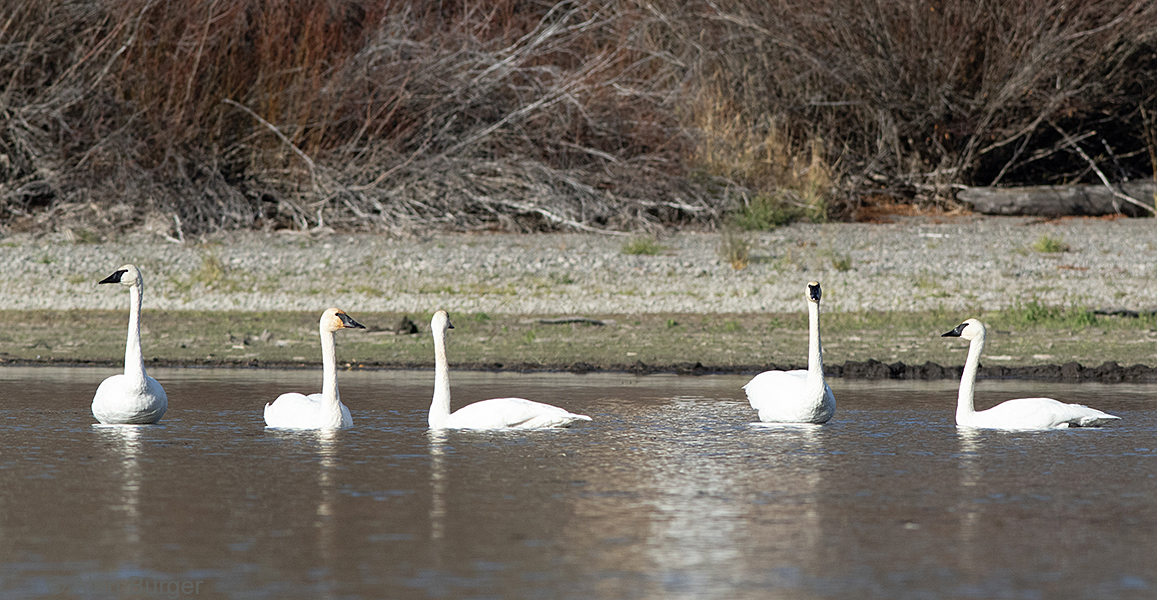
Five of the 10 Trumpeter Swans on Mamit Lake – 22 October 2023. These were the first swans to arrive in our area on their southward fall migration. Some of them remain in local lakes until these freeze over in mid-winter.
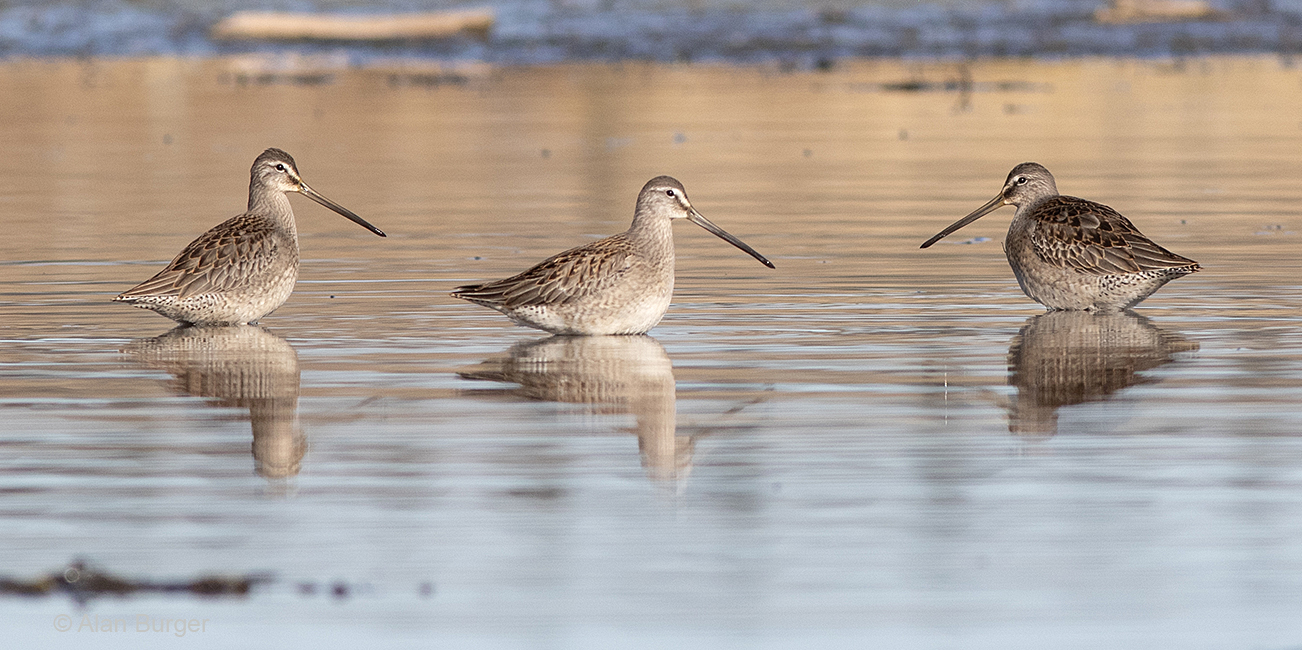
Late migrants – these three Long-billed Dowitchers were the only shorebirds on the lake on 22 October.
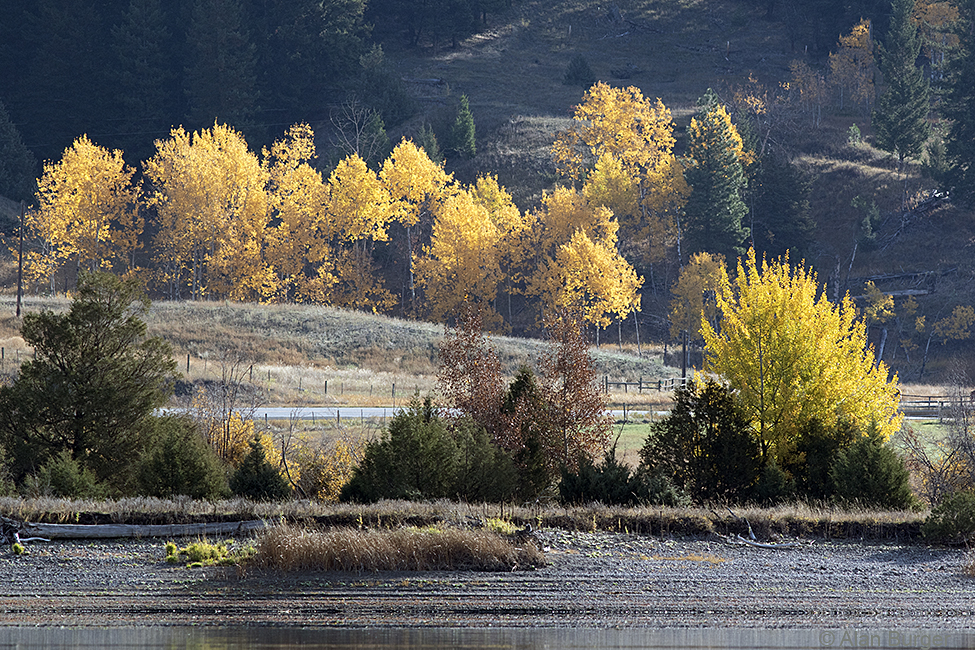
More fall colours at Mamit Lake – 8 October 2023.
All photos were taken with a Canon 7D MkII with a Canon 300 mm L lens. I keep the camera gear in a waterproof drybag which allows quick access but protects the gear.
~~~~~~~~~~~~~~~~~~~~~~~~~~~~~~~~~~~~~~~~~
